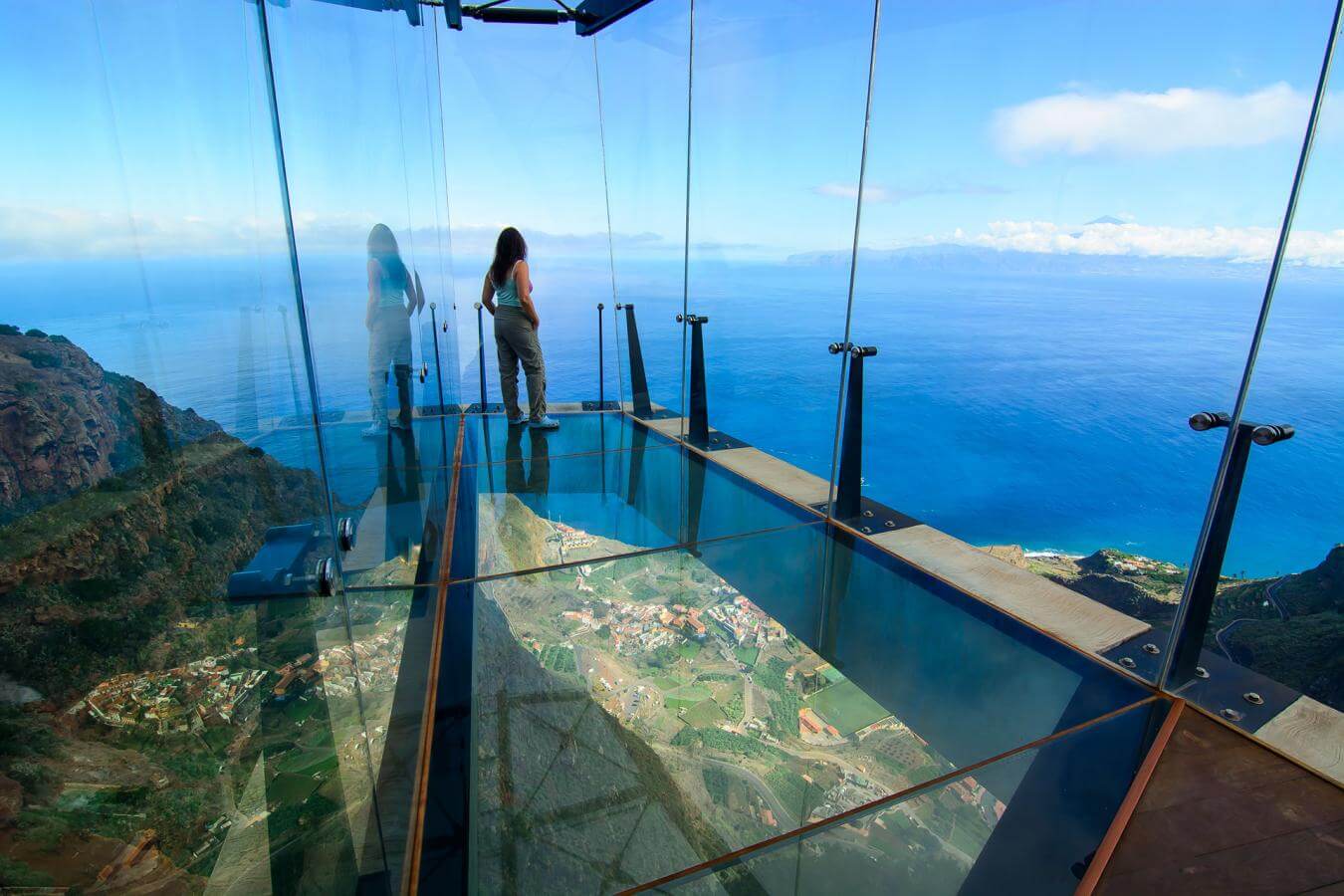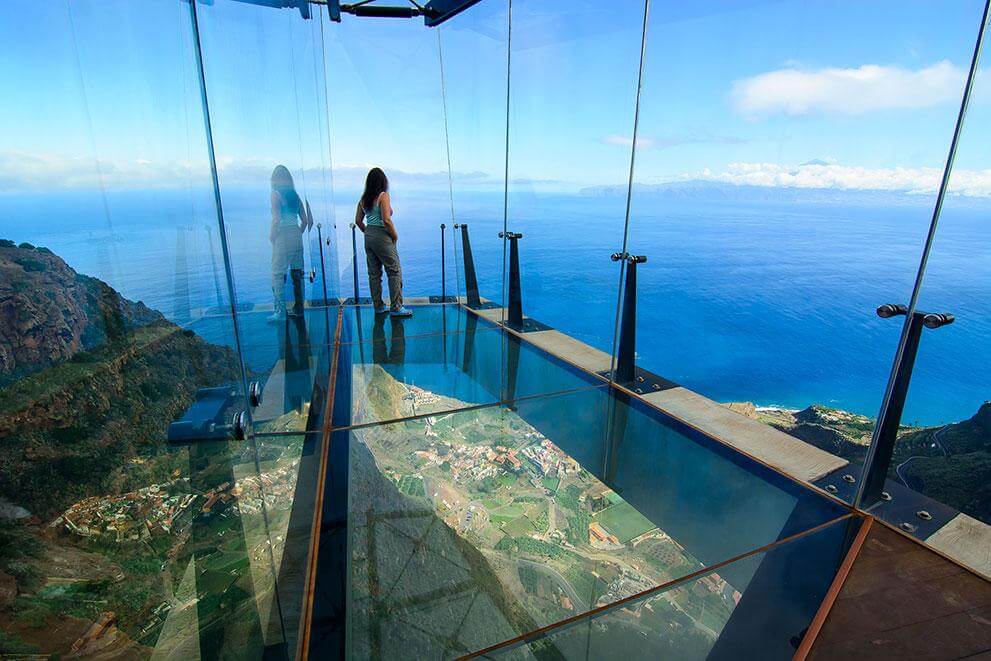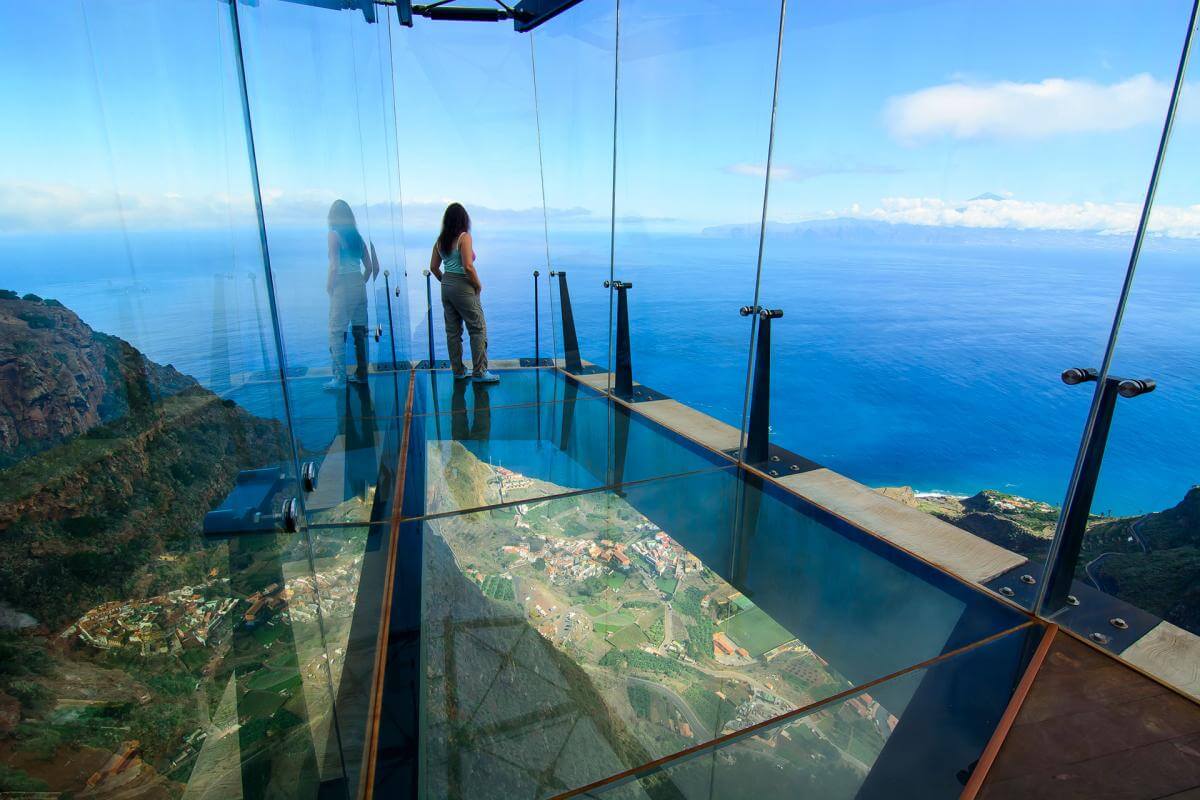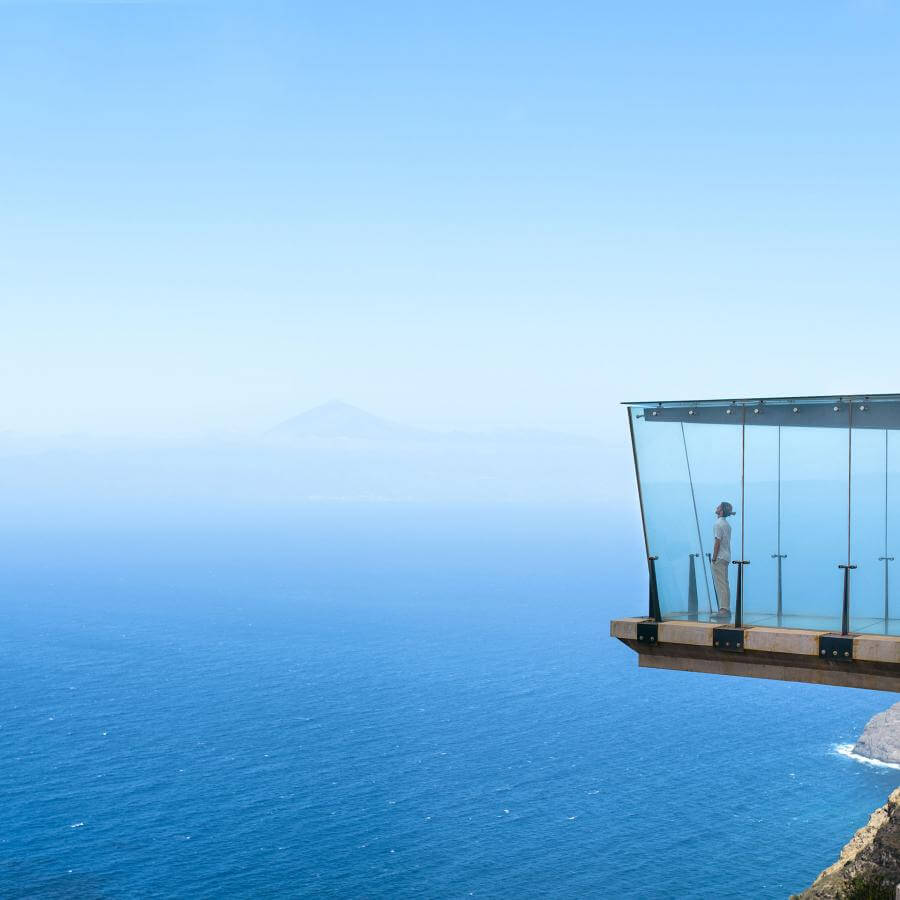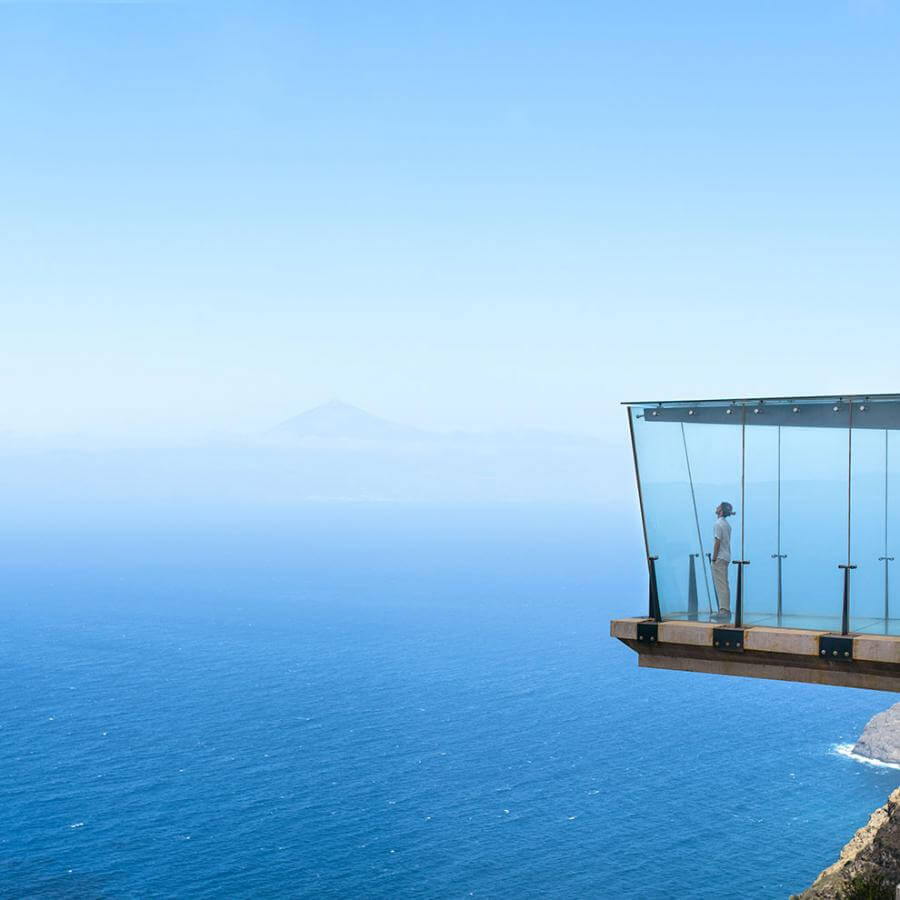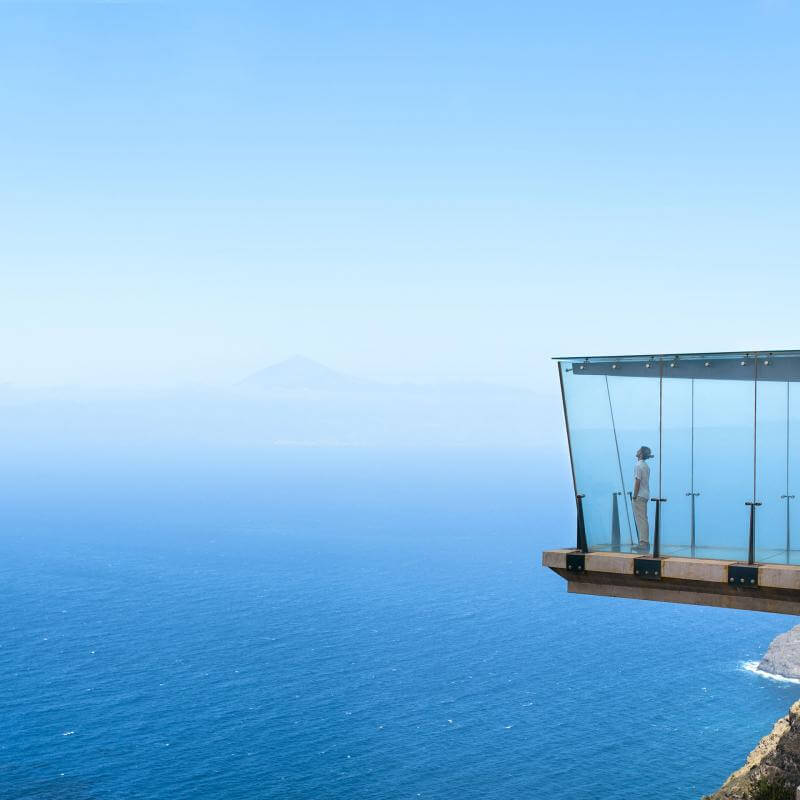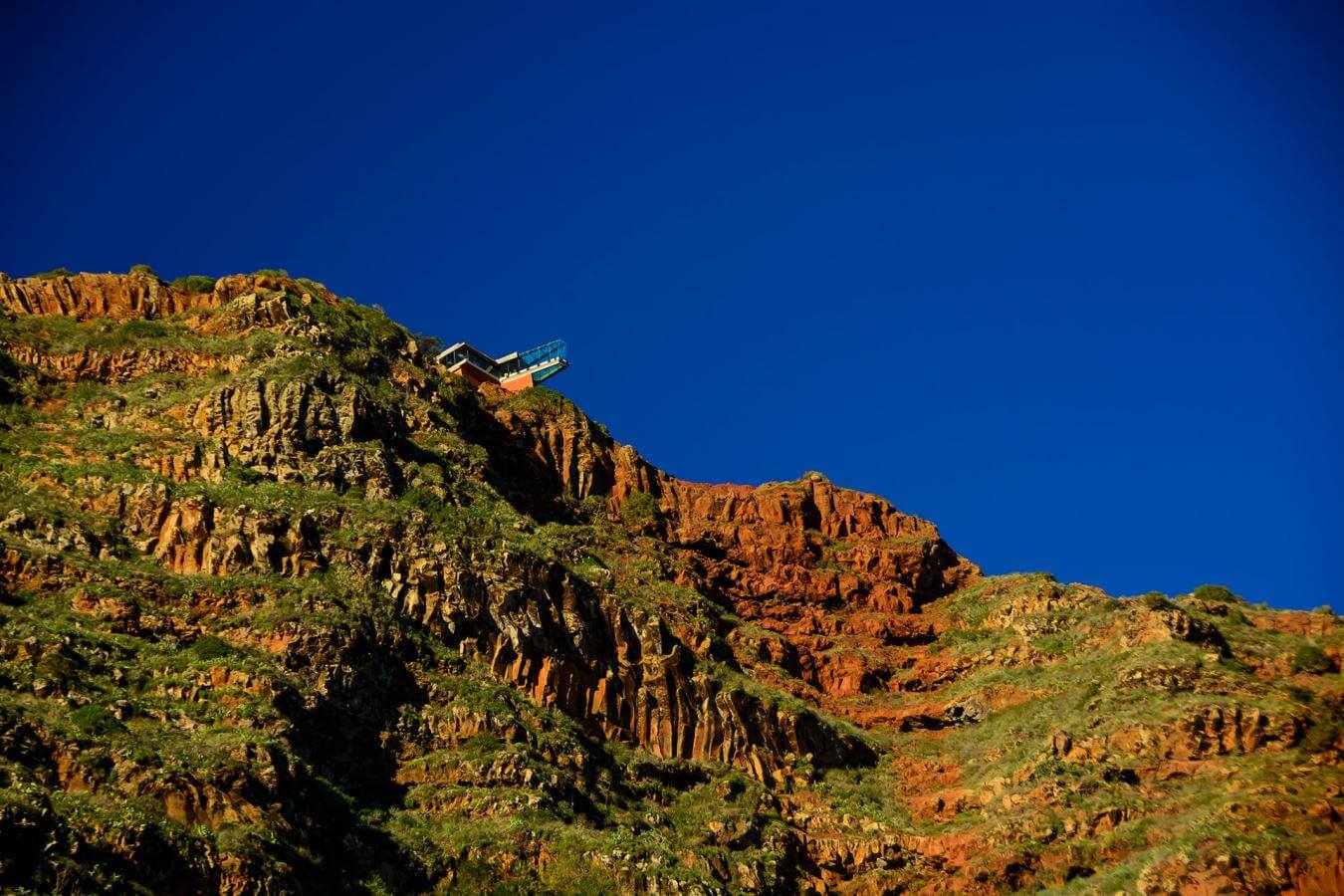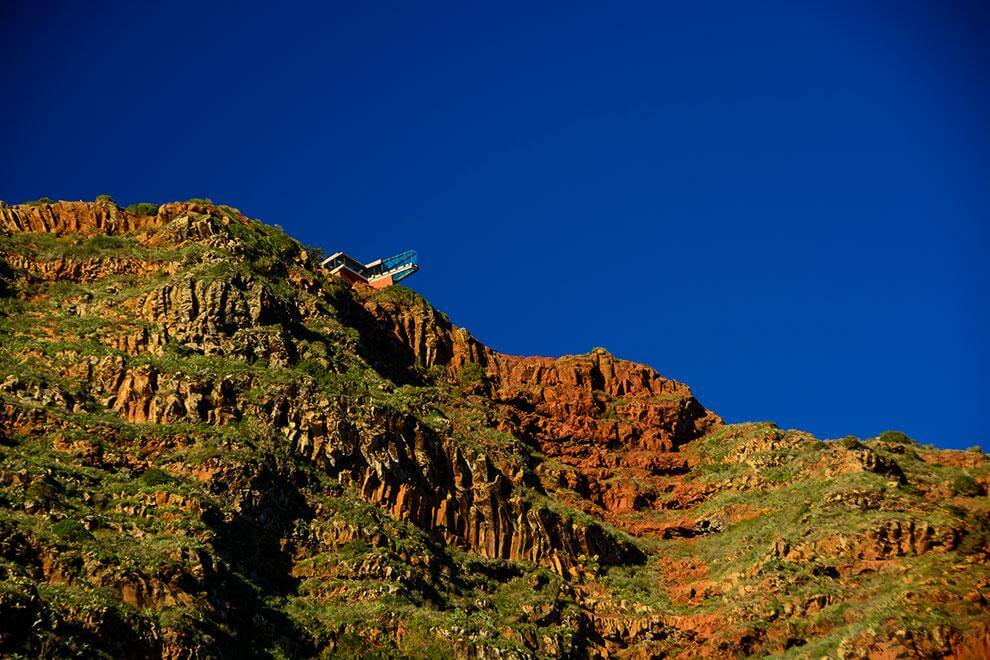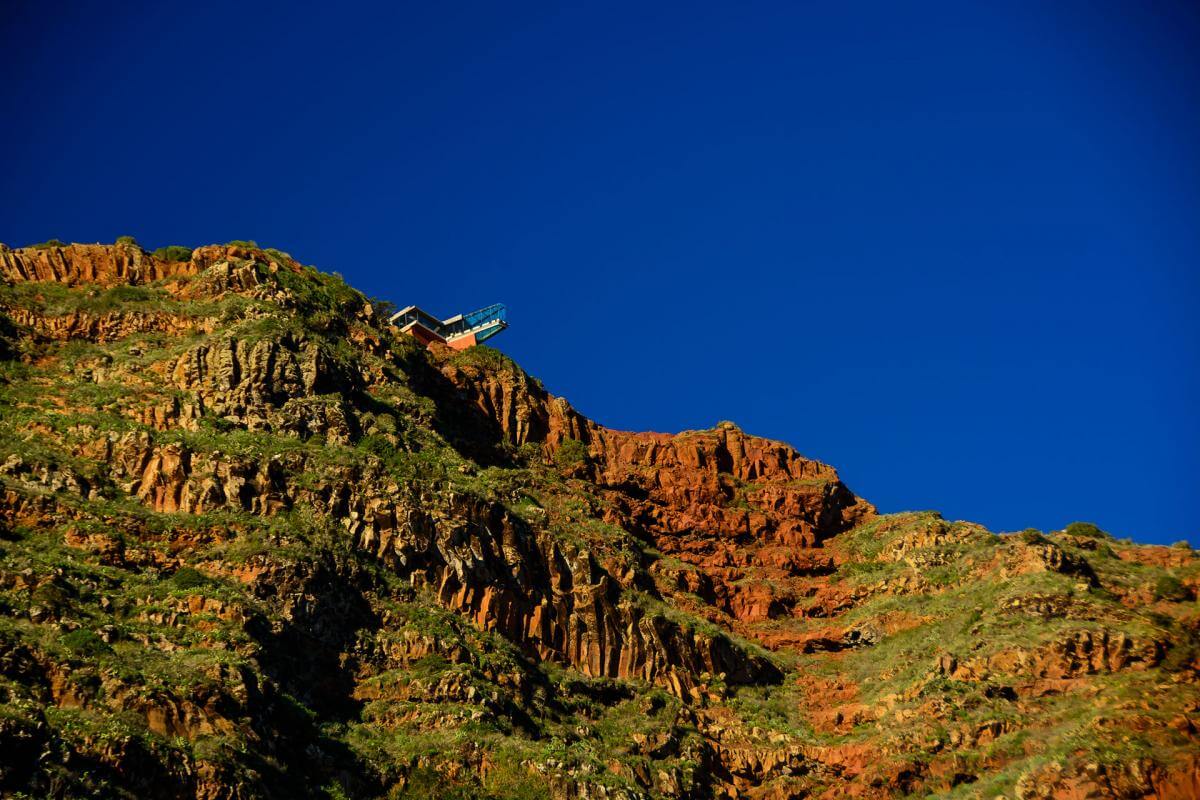La Gomera’s peculiar orography offers an extensive network of viewpoints where one can take in a landscape surrounded by different sensations.
Each one has its own special charm and impacts us with its diversity and panoramic views.
In this article, we will focus on the viewpoints from which we can observe the geological landmarks, the clear evidence of the volcanic origins of La Gomera, and one of the most important characteristics that will mark every step of your journey along the way.
La Gomera was formed 12 million years ago, and is presented to us today in a dormant, calm form. The island has not had any volcanic eruptions for 2 million years, and so erosion has sculpted ravines, cliffs, crags and beaches with highly singular shapes, which stand as witnesses to the intense volcanic activity that occurred during these ages.
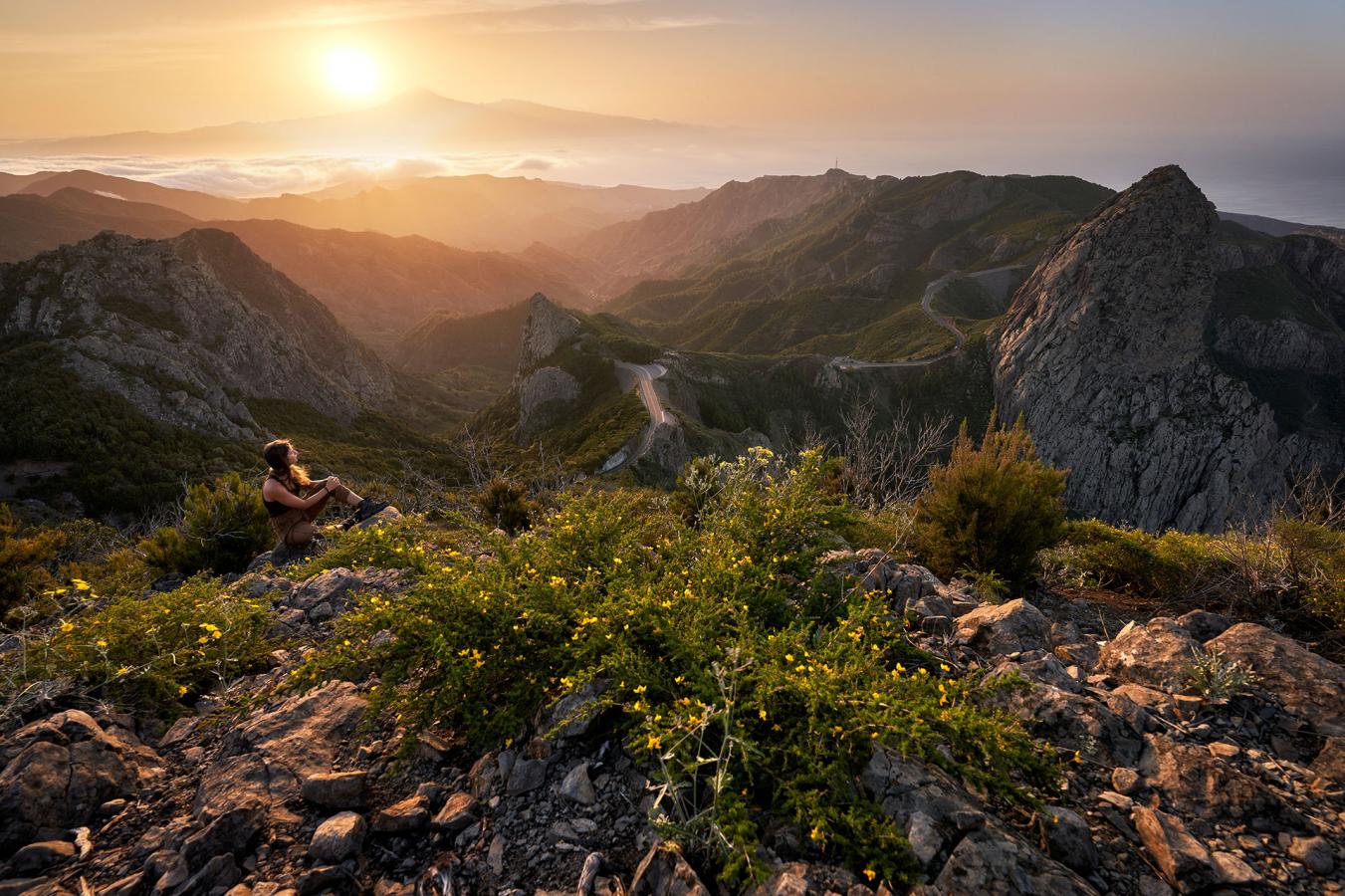
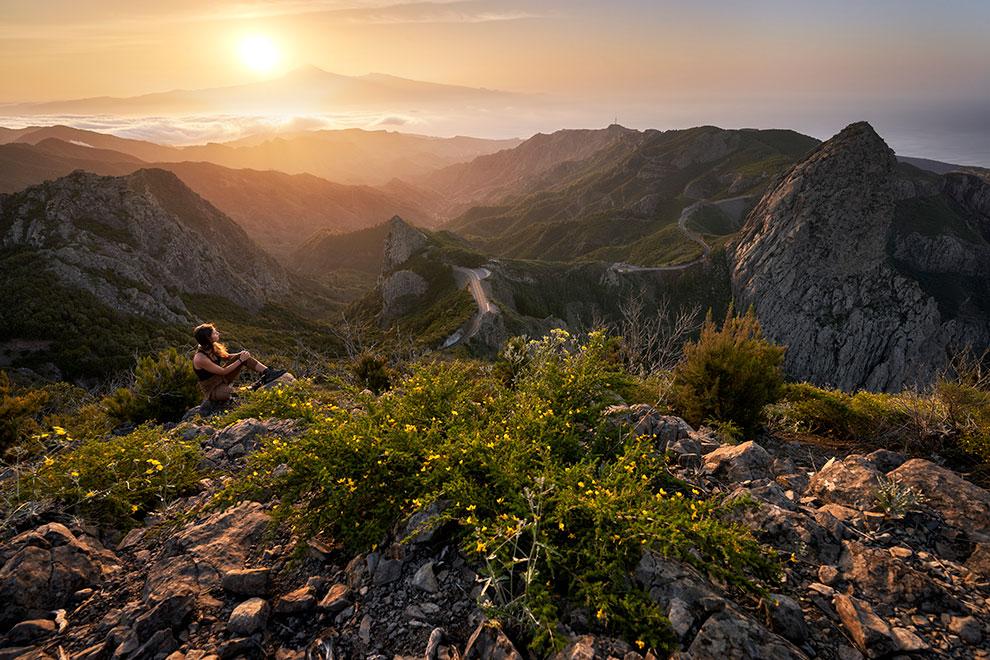
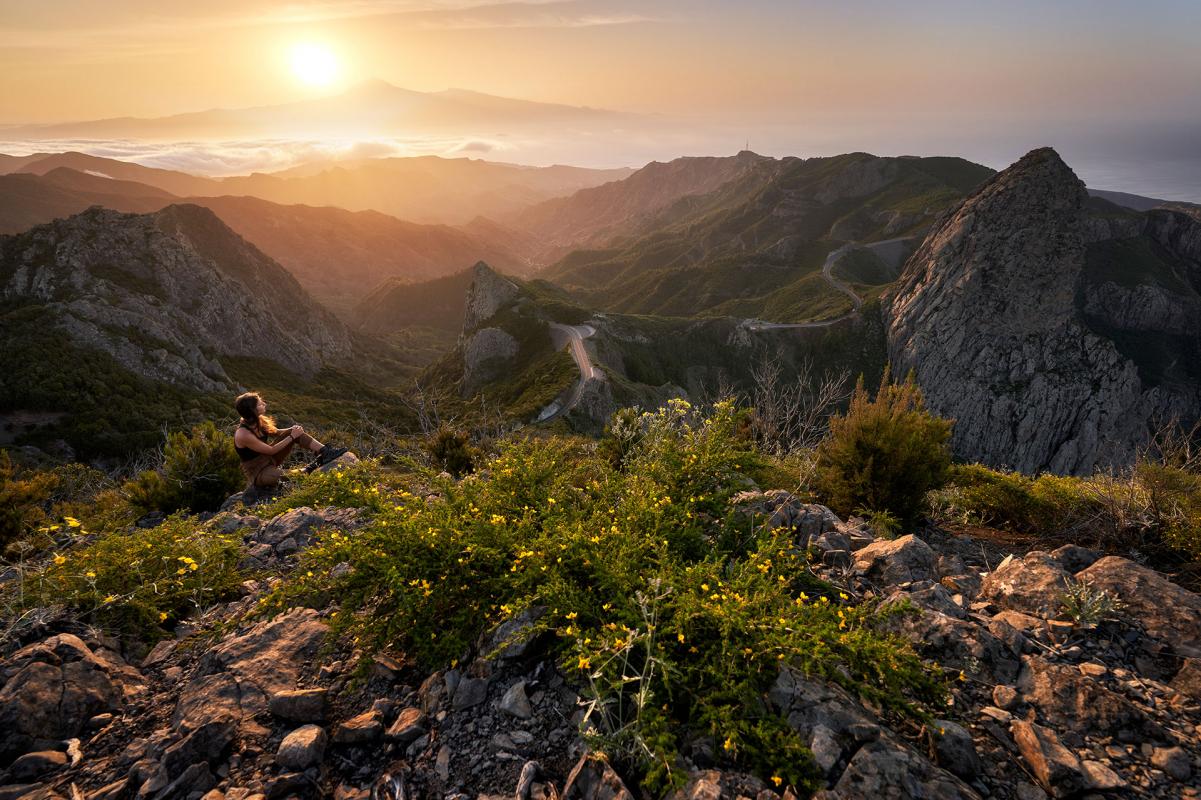
Viewpoints of Los Roques
Los Roques pervades the island’s landscape with its majesty. This series of viewpoints is excellent for contemplating the rocks of Agando, Ojila, La Laja or Carmona and La Zarcita. These geological monuments are the protagonists of the scenery, and were deemed sacred by the indigenous people of La Gomera.
On days when the right weather conditions are present, one can see cascades of fog swooping down the slopes of the mountainsides. A very special phenomenon we owe to the trade winds.
The rocks are former magma outlet vents where large accumulations of lava formed. Over time, modelled by years and years of erosion, they were exposed, and their striking presence emerged, rising up over the surrounding nature.
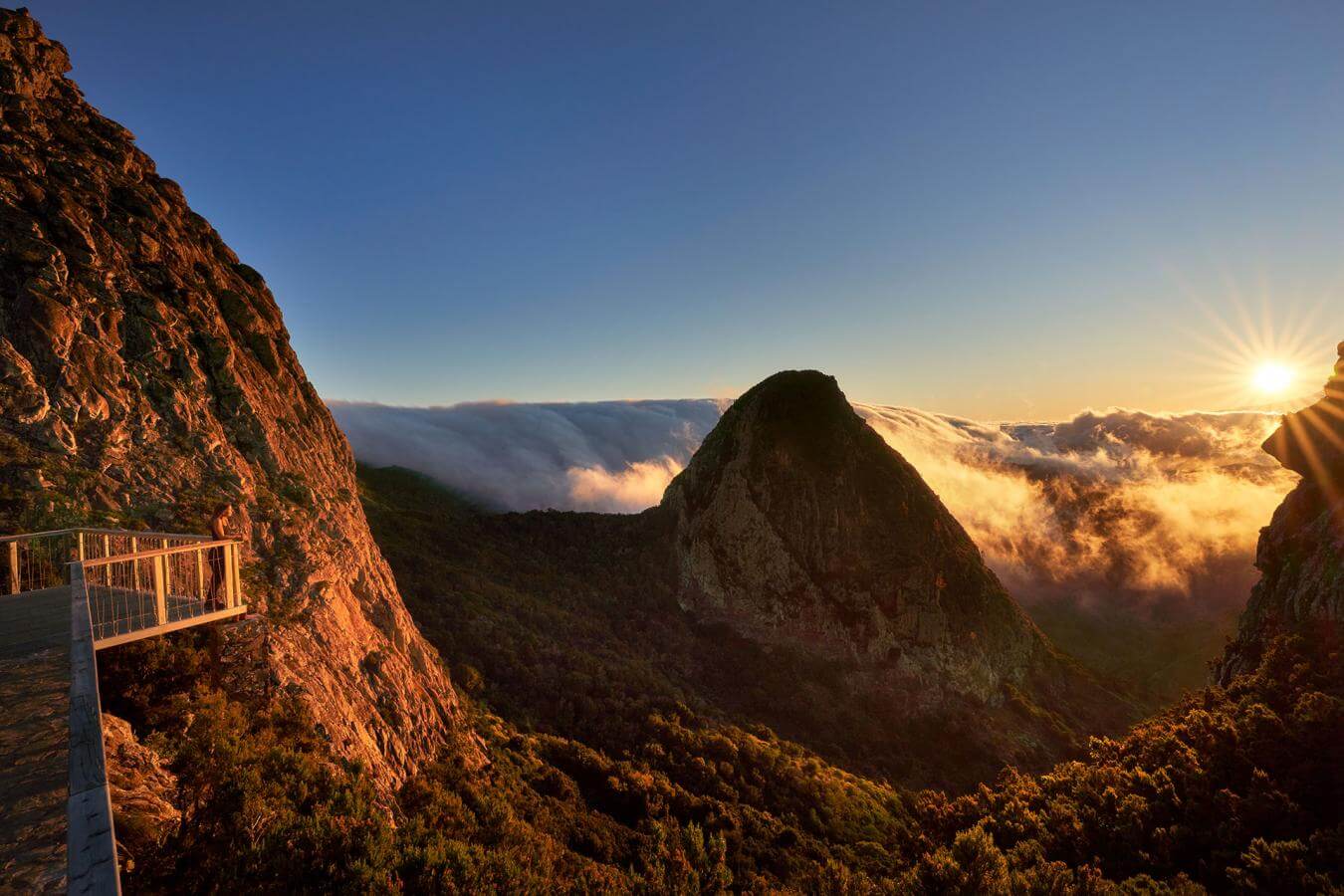
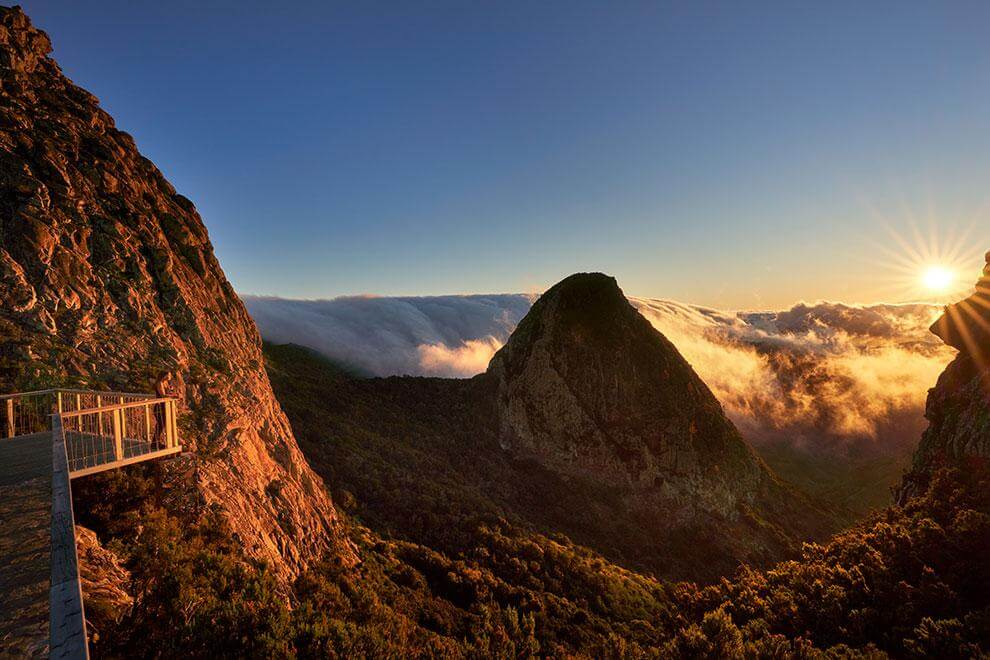
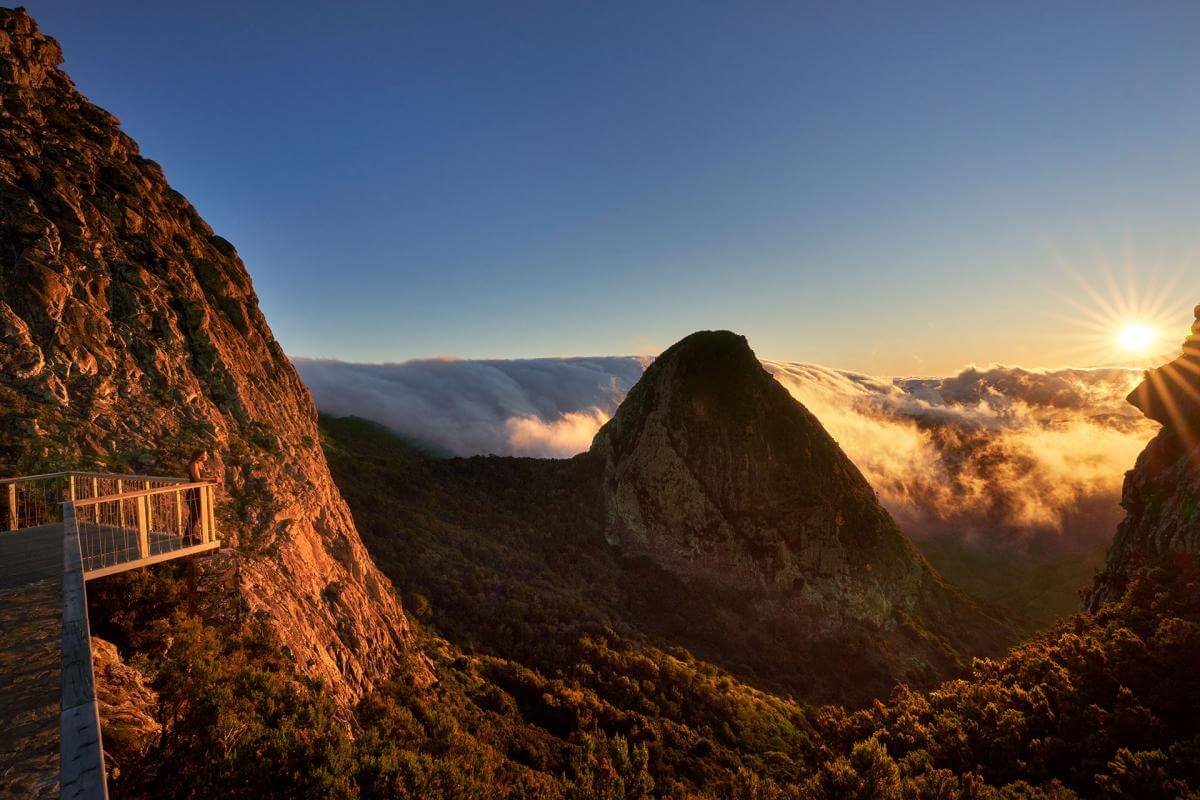
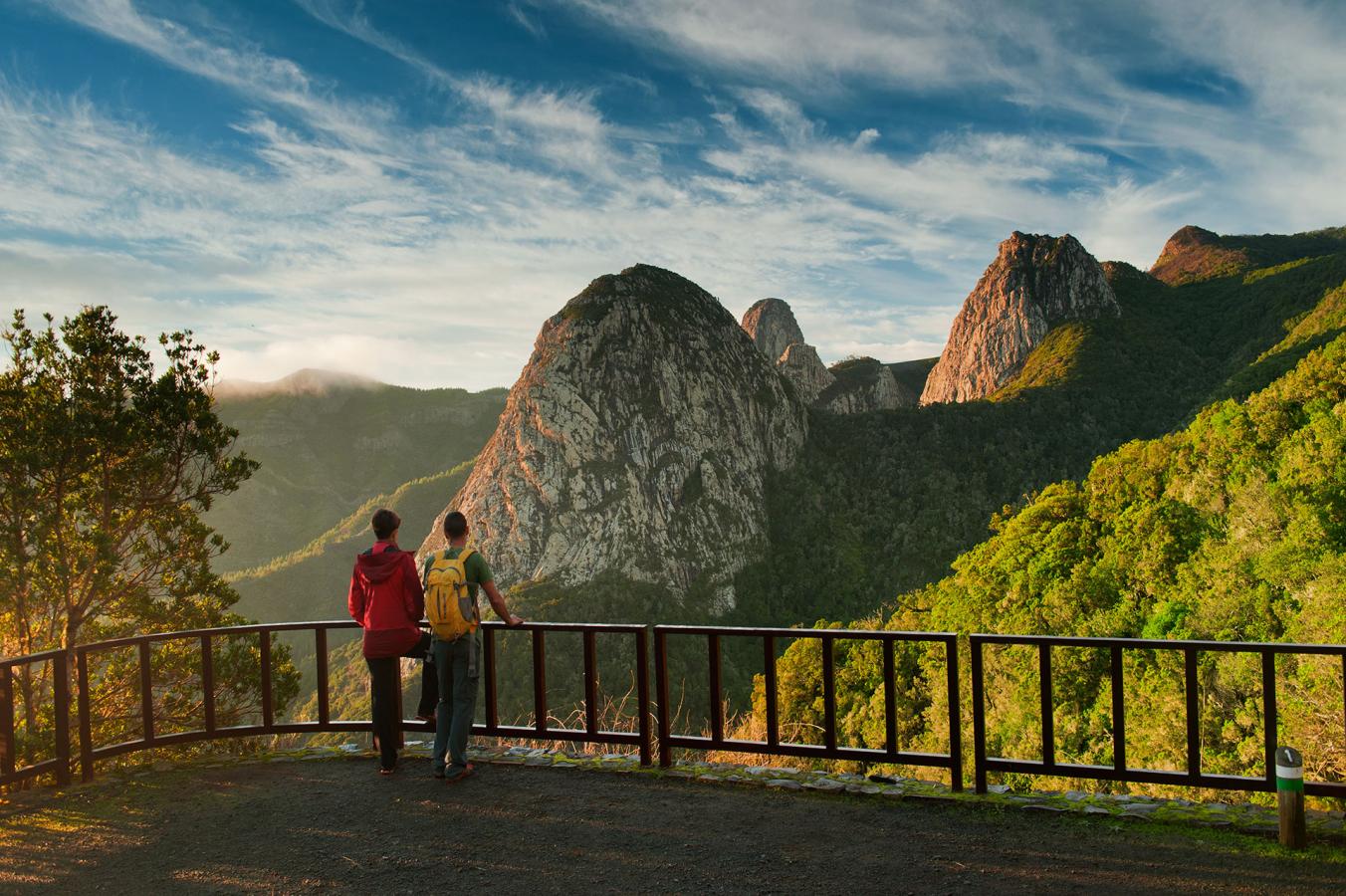
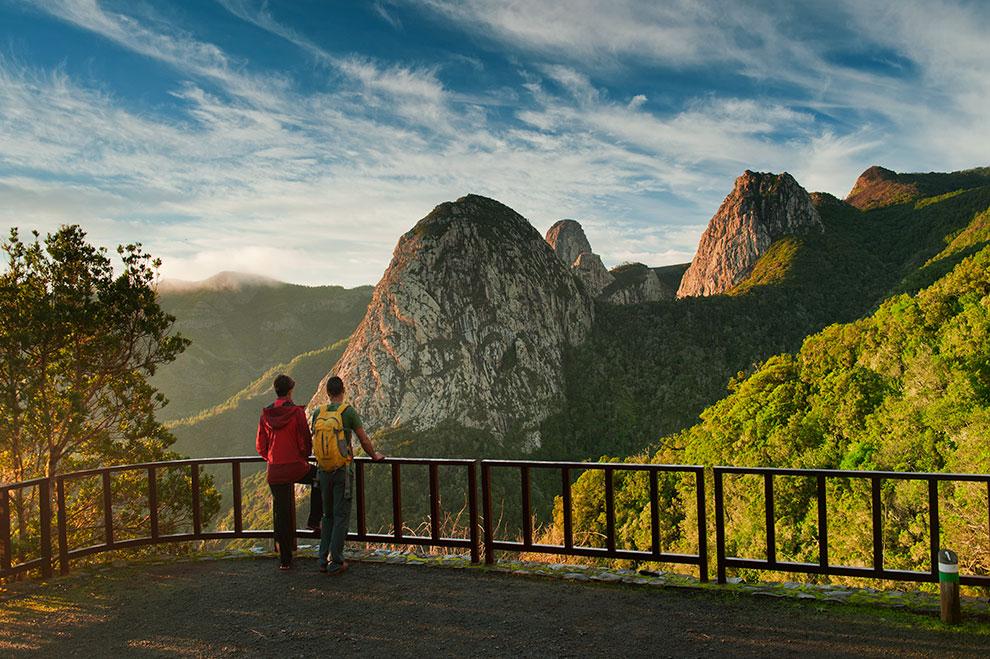
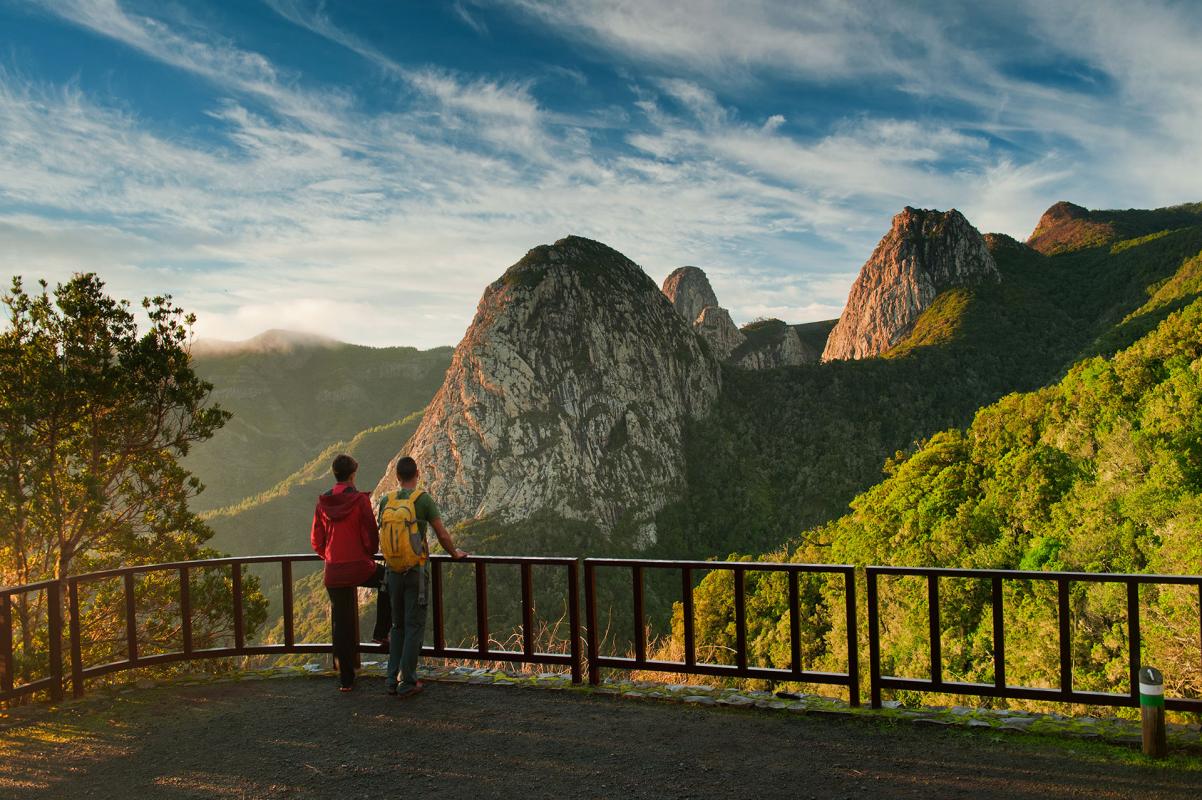
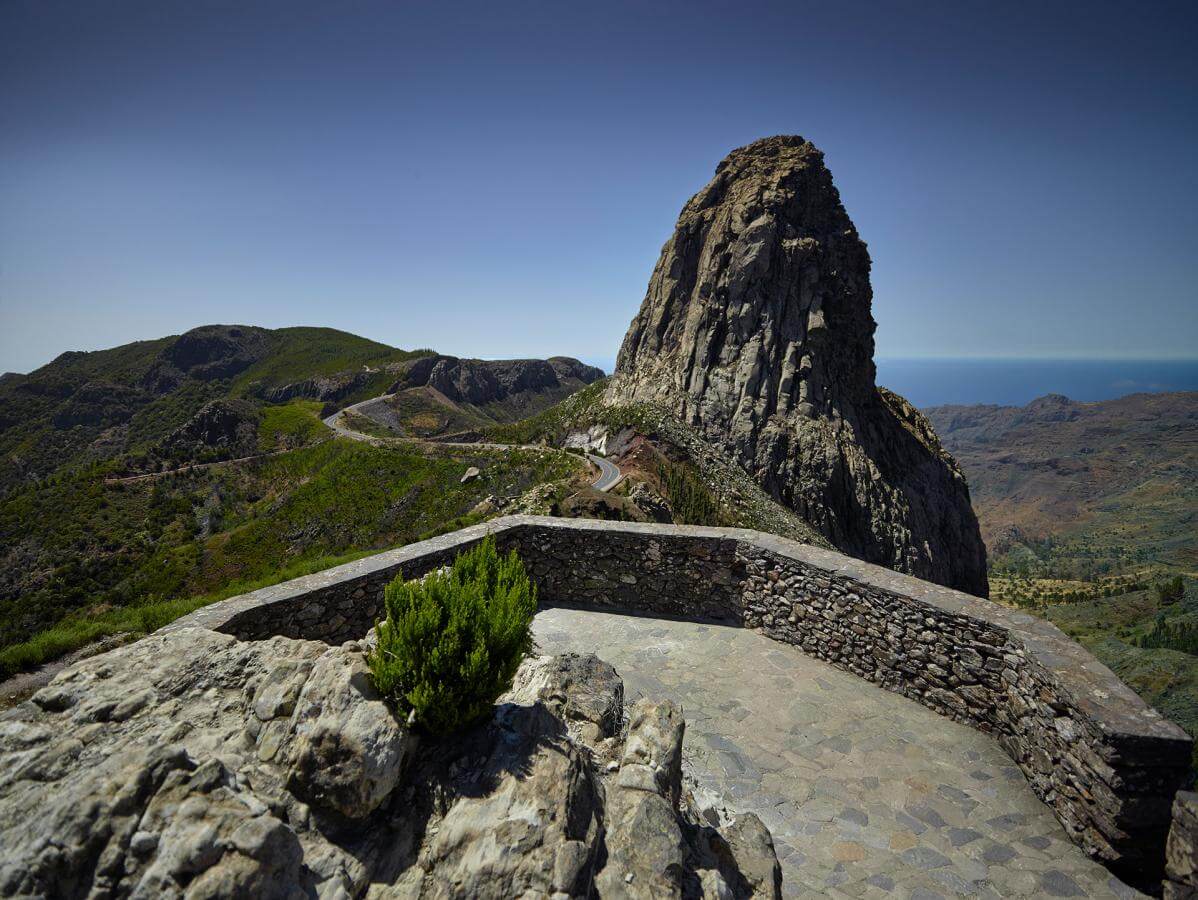
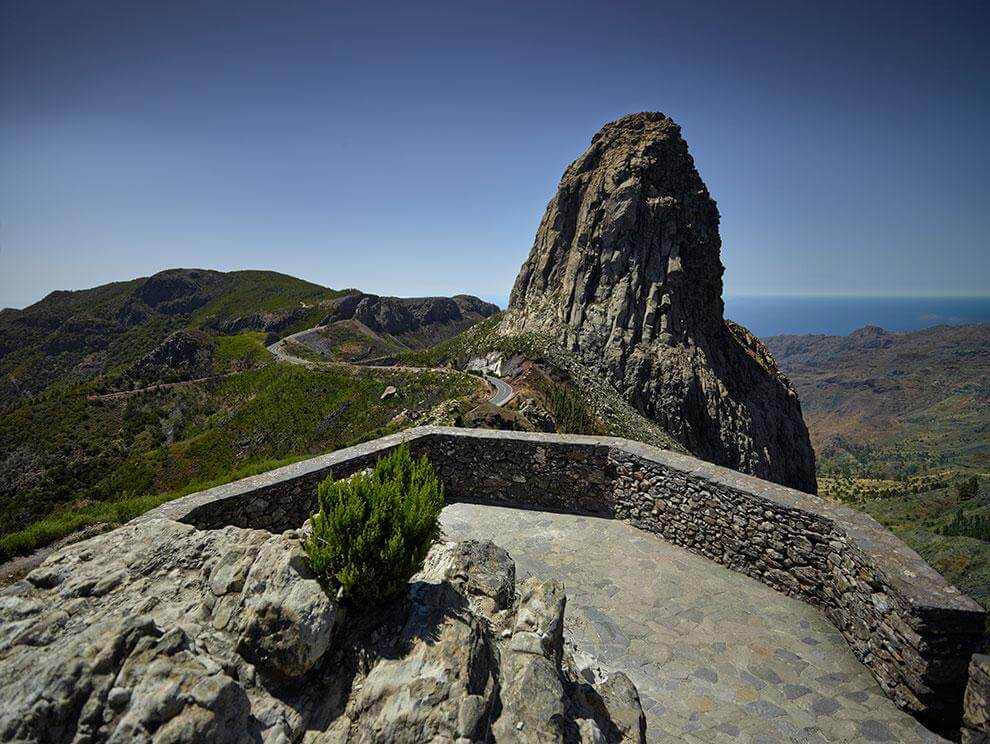
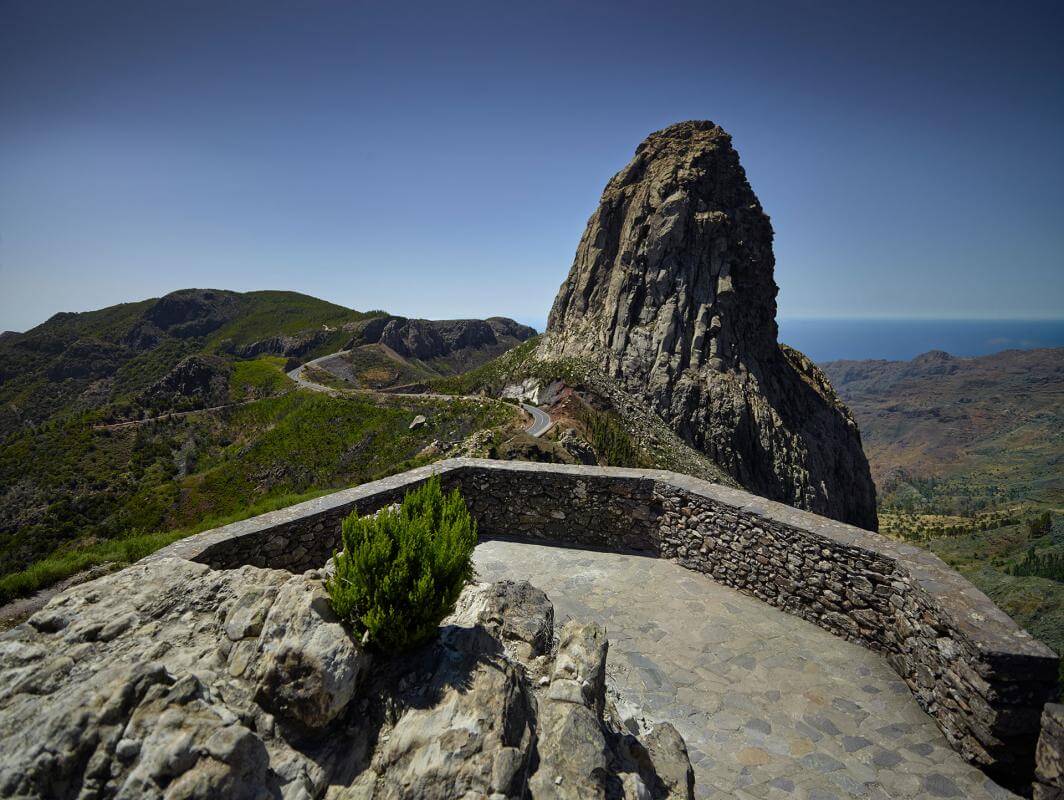
Igualero Viewpoint
The viewpoint of Igualero stands out for the view it affords of Fortaleza de Chipude, a rock formation with a flat summit standing at an altitude of 1240 metres.
You can also observe the Erque ravine, 7 km long and 800 metres tall, where water has modelled the striking beauty you perceive with every step you take.
Here we find the monument to Silbo gomero (the whistled language of La Gomera), a symbol of the characteristic ancestral language that arose from the need to communicate and which still survives today.
This viewpoint is near El Cercado, a place you have to visit in order to delve into the customs and history of the island through its very special crafts.
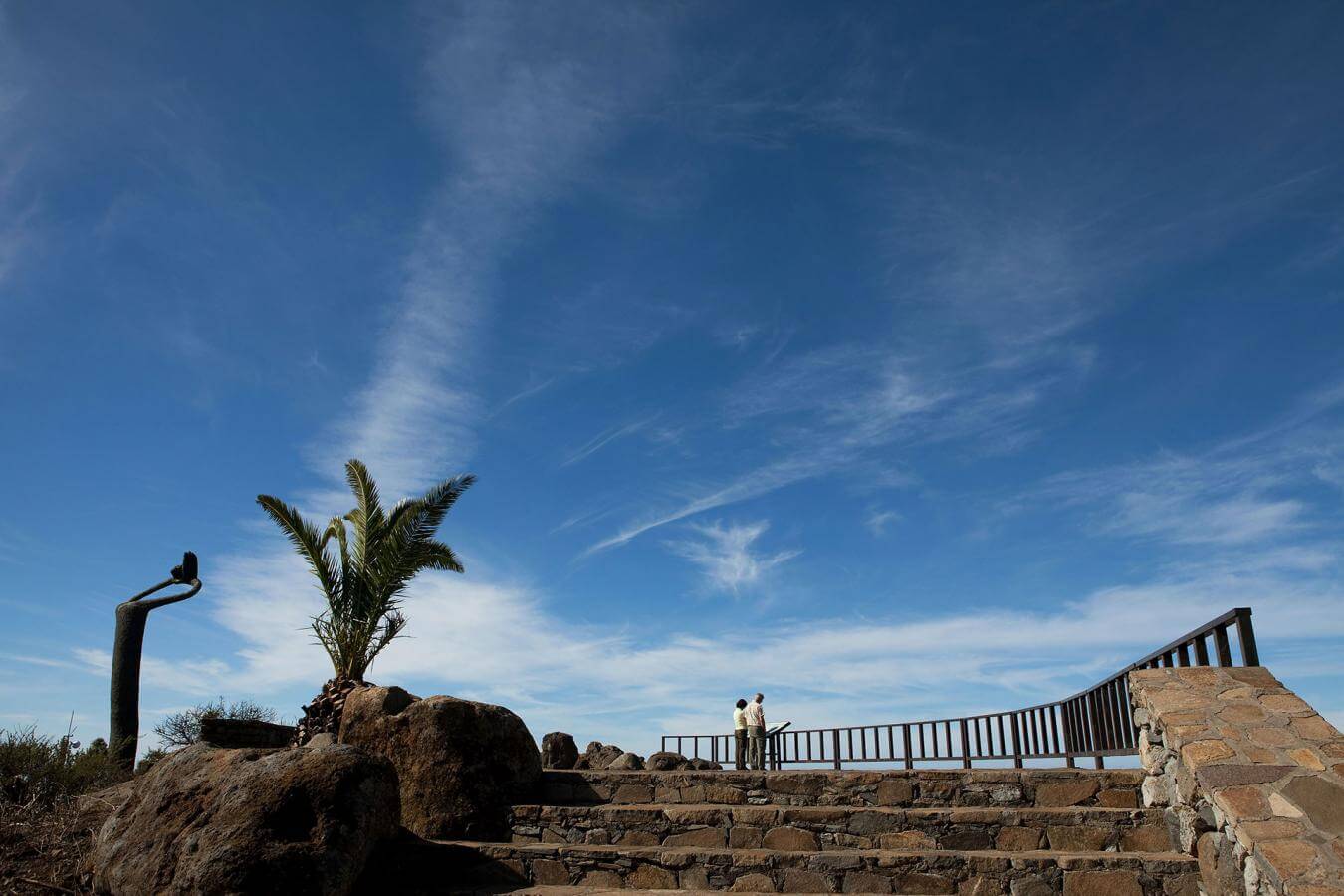
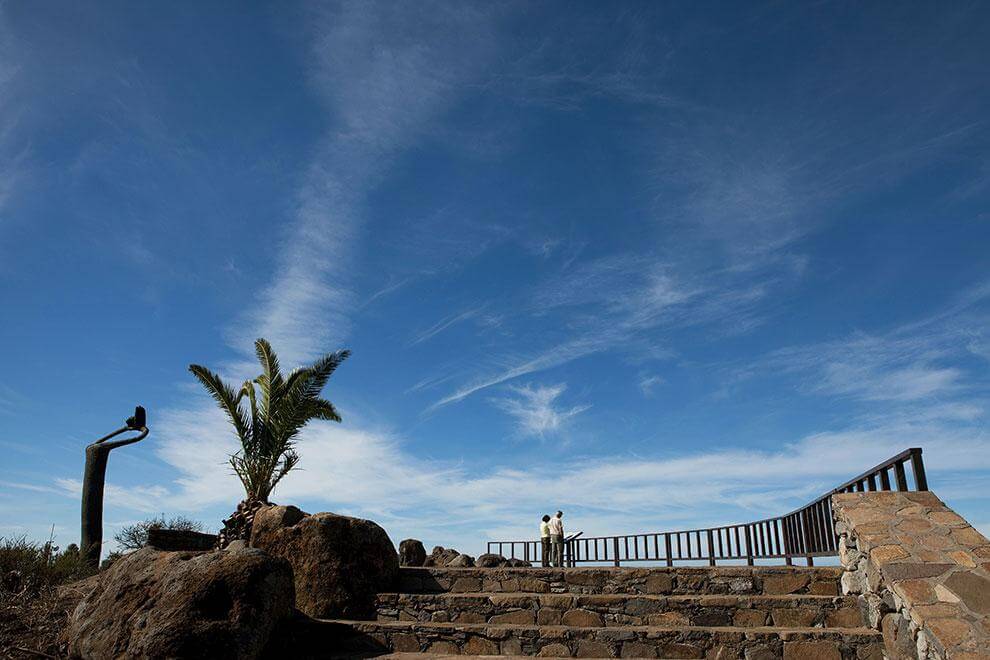
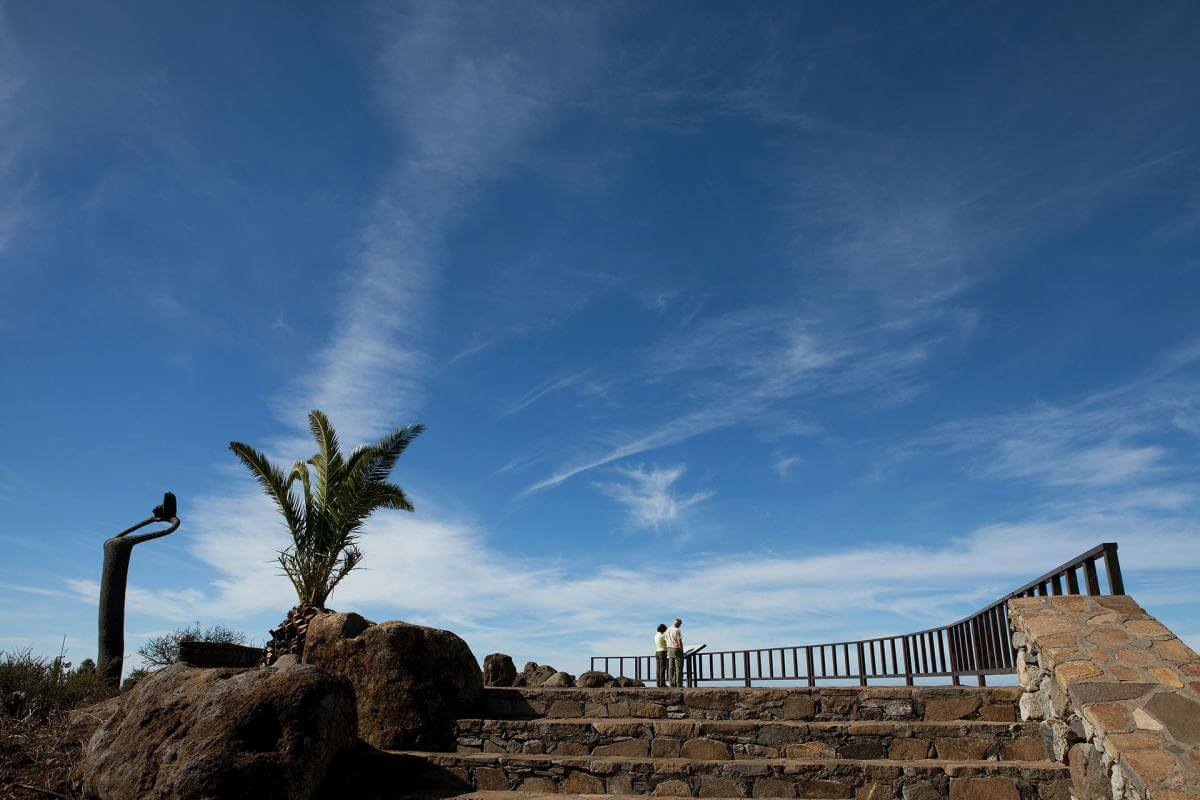
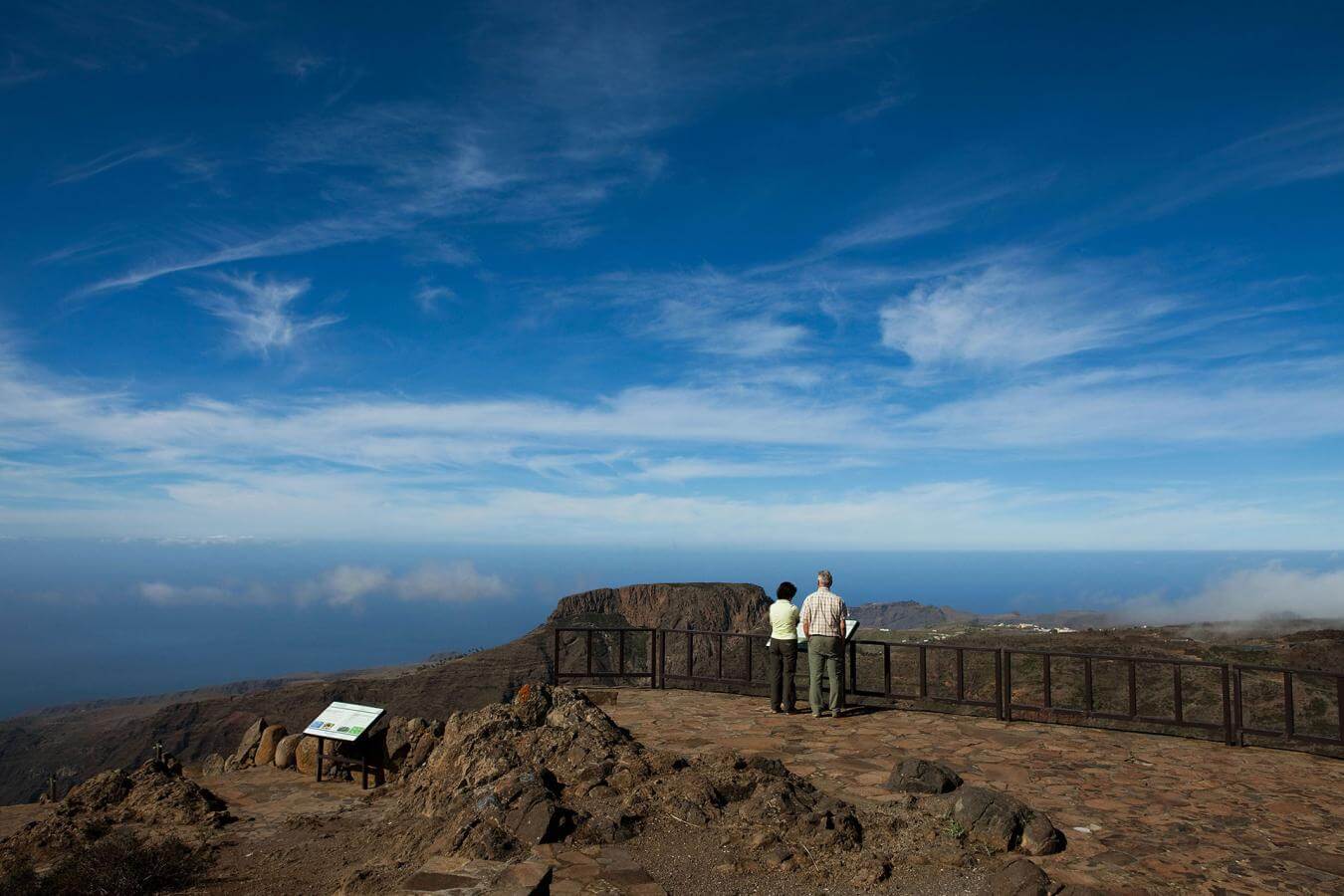
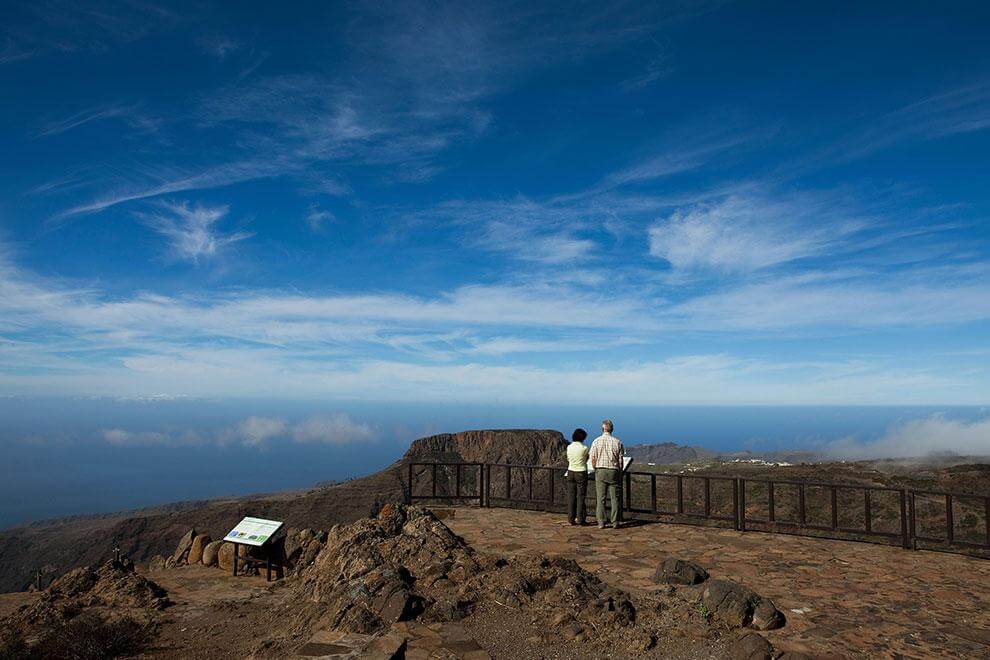
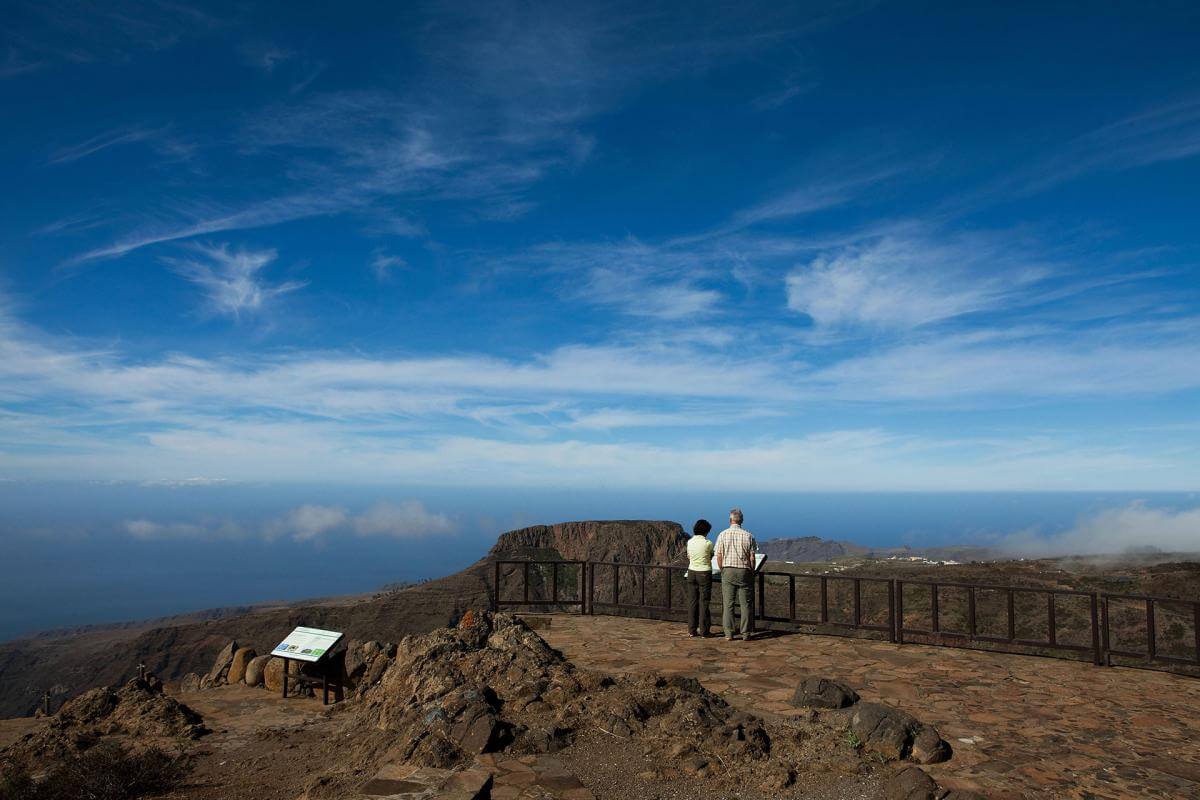
El Santo Viewpoint
This viewpoint is found in the village of Arure, set between two imposing reliefs, with a gentle slope that leads down to the sea. One can clearly see the different compositions of the layers of sediment. The impermeable nature of the rocks and sediments have led to the appearance of numerous springs and fountains that impregnate this picturesque ravine with greenery.
This viewpoint, with its exclusive views of Taguluche, is particularly good for observing both sunsets in the sea and the infinity of stars that can be seen thanks to the extremely clear skies the island regales us with. In the evening hours one can hear the goat bells as the animals walk home among the impossible vertical faces of the mountain slopes.
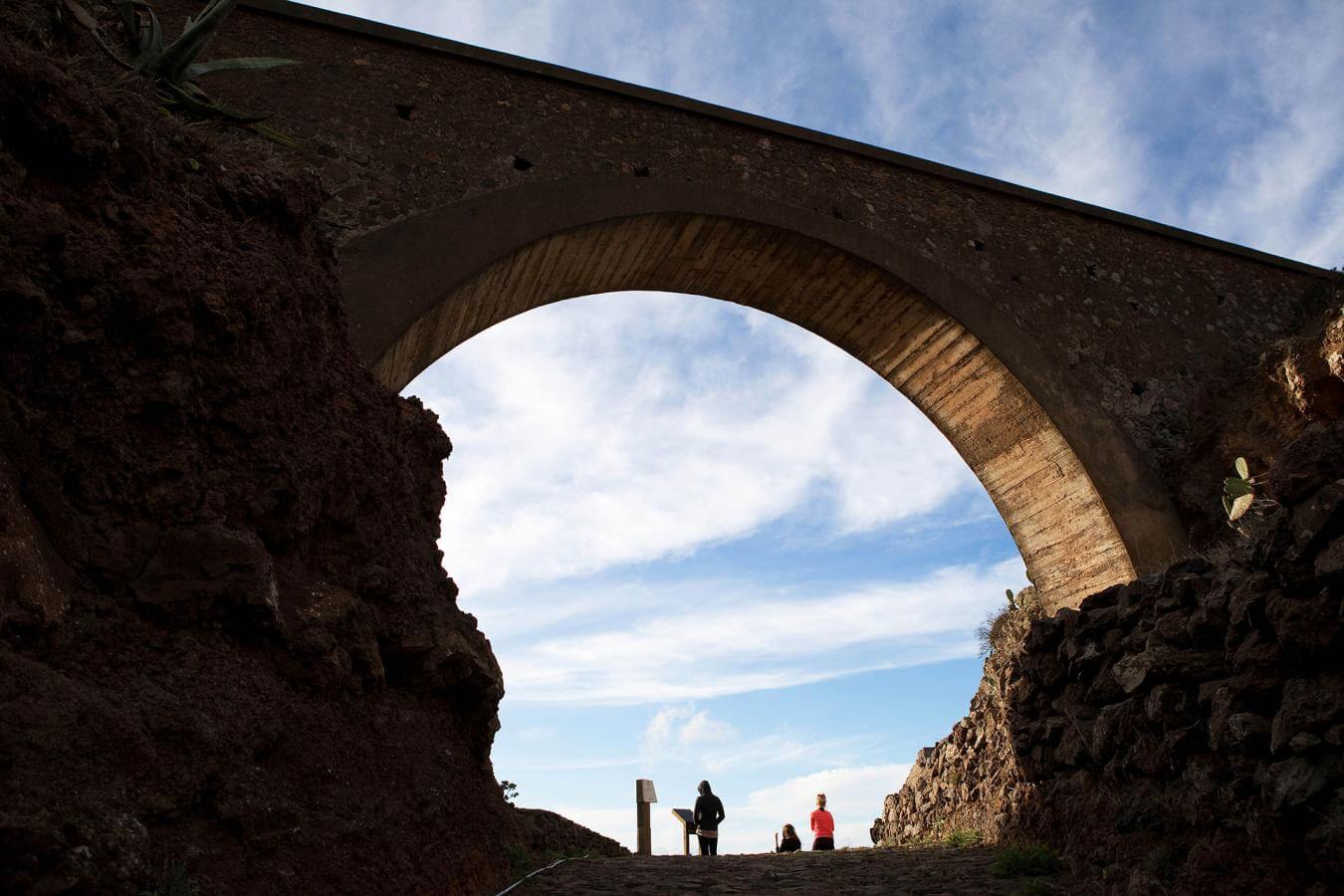
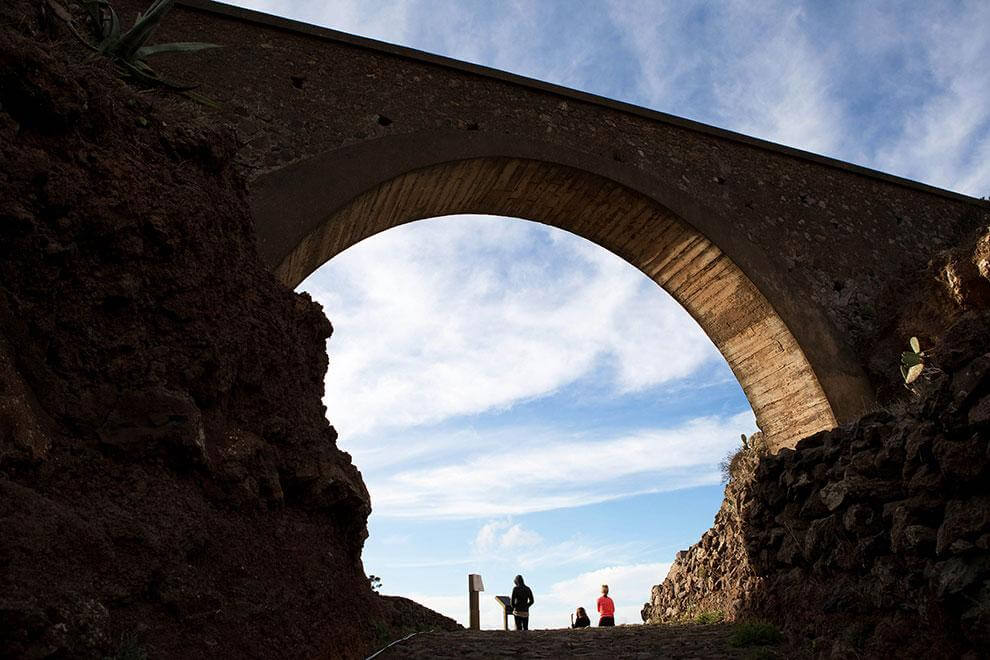
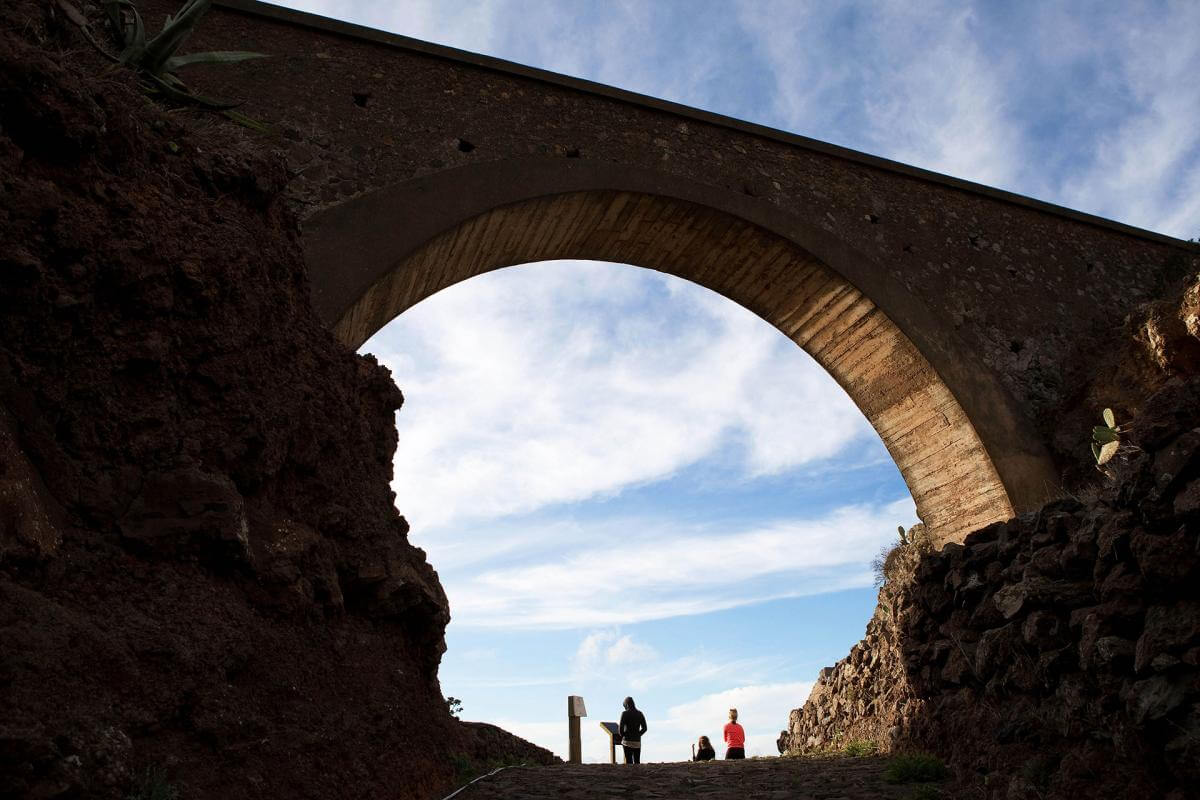
César Manrique Viewpoint
This viewpoint is the work of the Canarian artist César Manrique, and it offers us a spectacular view of the ravine of Valle Gran Rey. The water that filters through the permeable materials of the different layers irrigate the entire valley, allowing crops to be grown on terraces. The quality of this water is transferred to the flavours of the regional produce that can be sampled in the island’s restaurants. Numerous palm trees are dotted all around this area’s characteristic landscape.
On winter nights, if we look out towards Valle Gran Rey precisely at the moment the sun is setting, we can see the constellation of Orion with its characteristic belt of three stars.
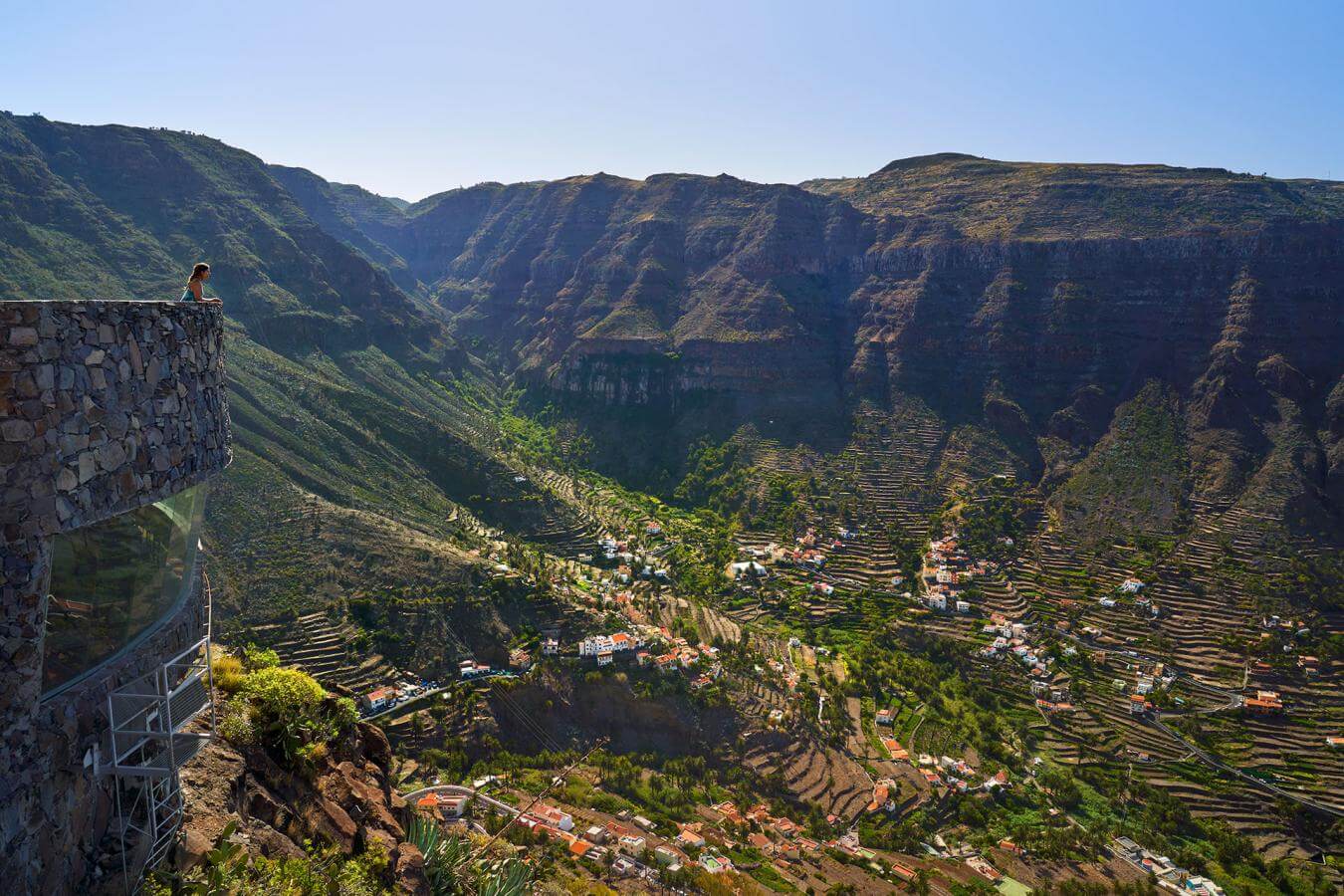
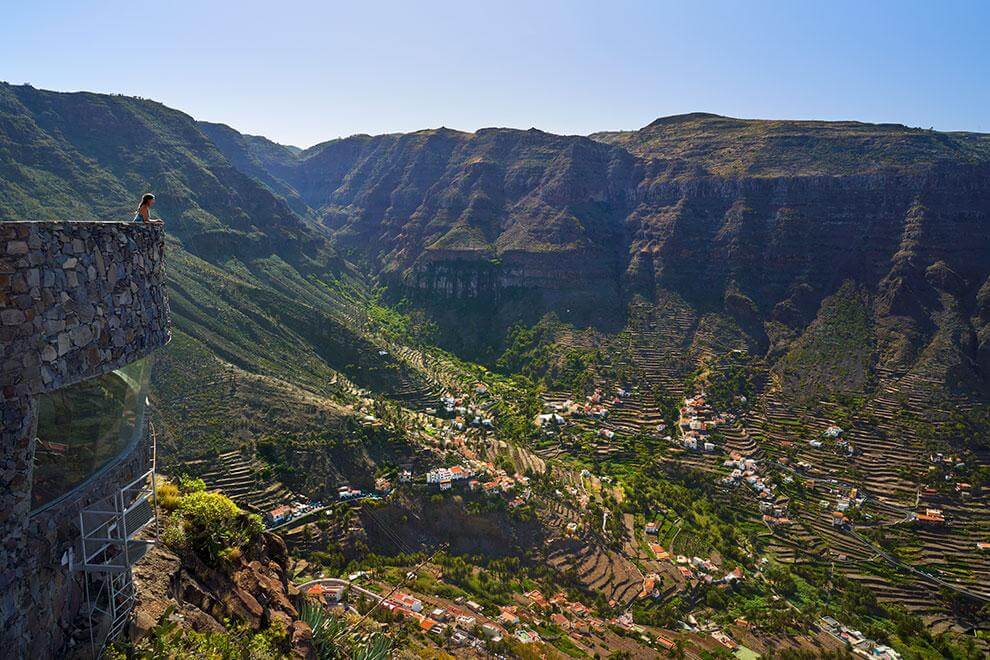
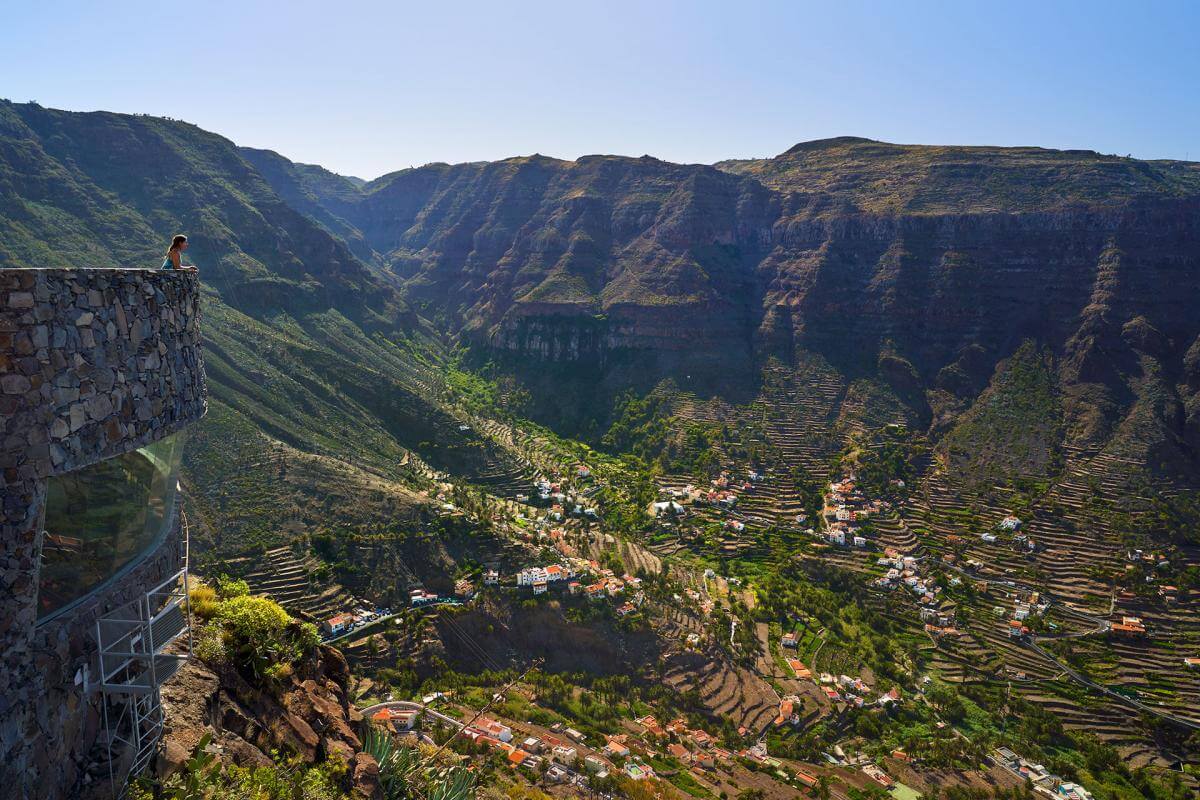
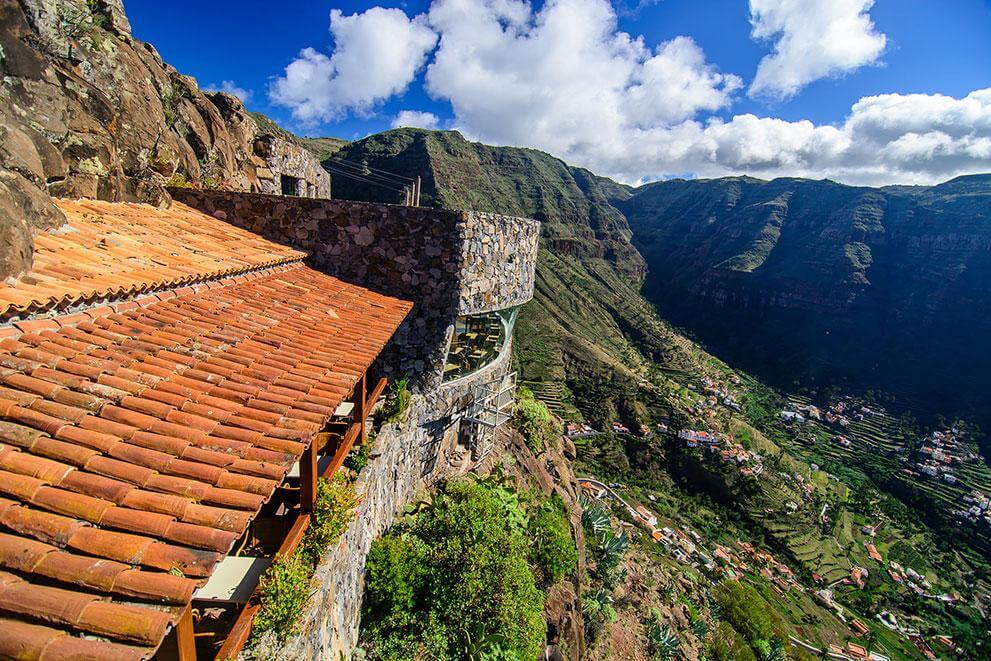
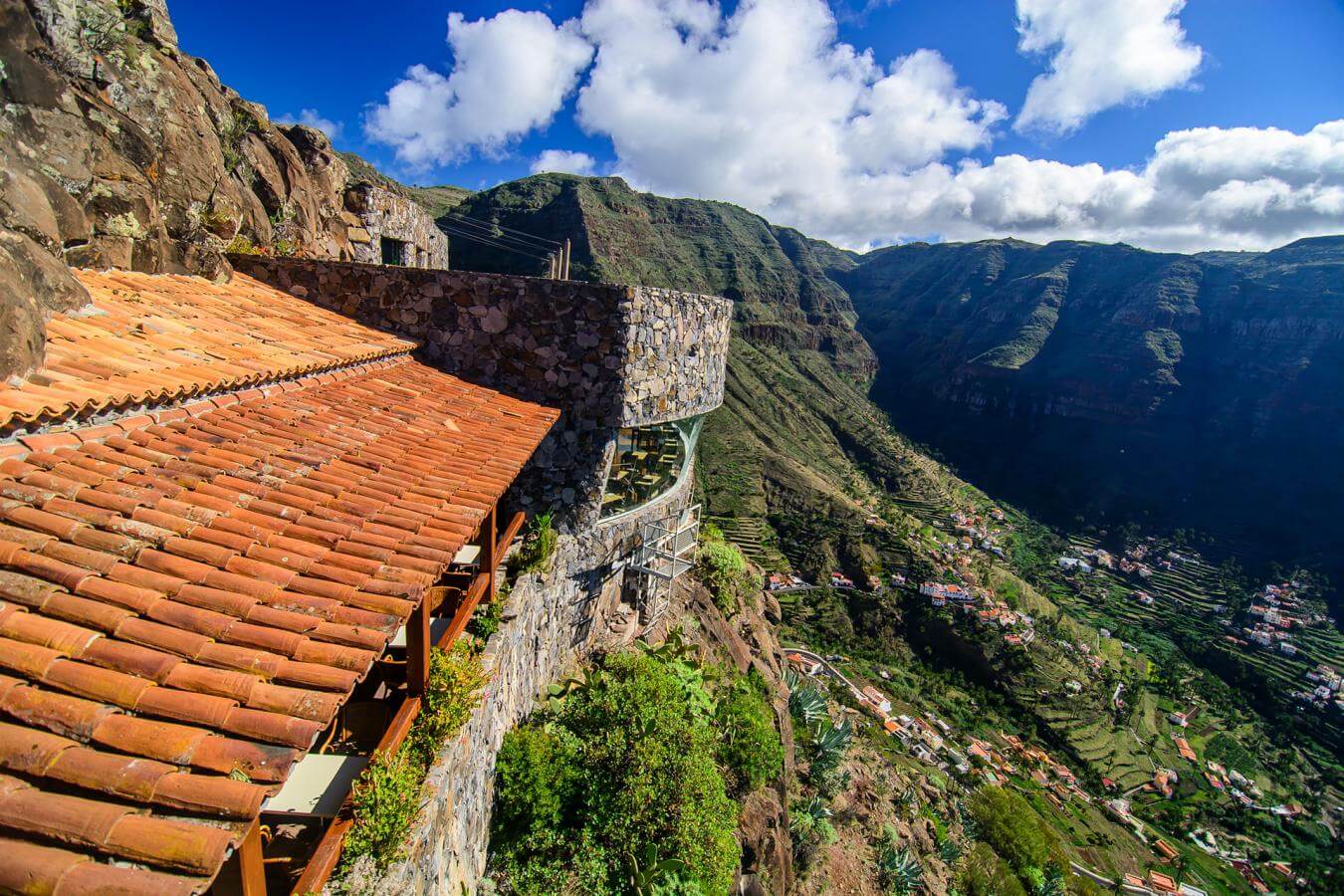
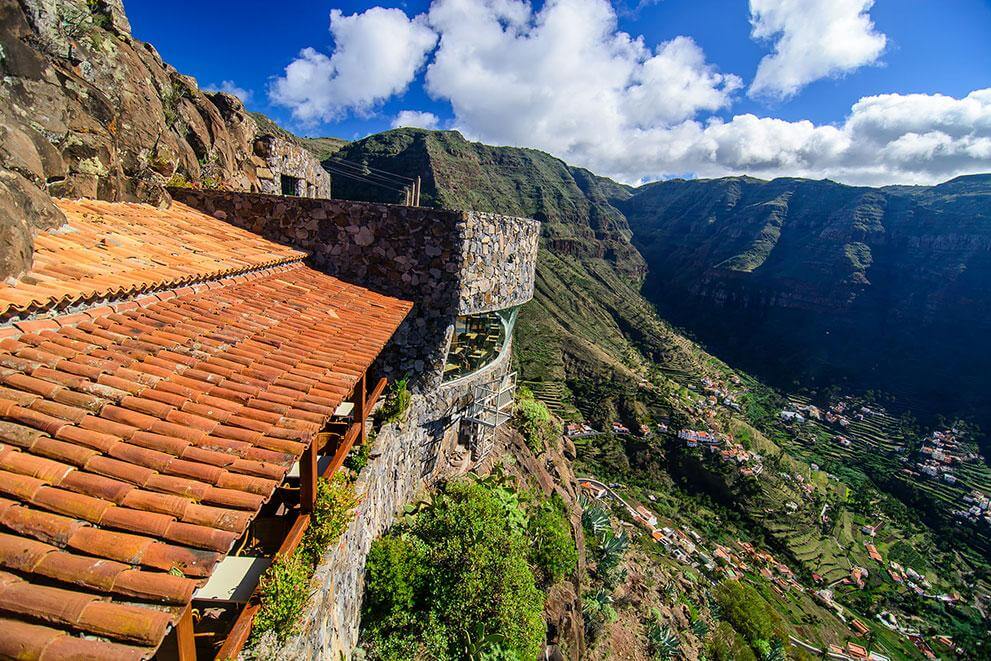
Alto de Garajonay
On this viewpoint, located at La Gomera’s highest point, thanks to its 360-degree panorama and altitude of more than 1480 m one can observe the magnitude of the beauty that pervades the island. On clear days one can clearly see the other islands in the Canarian archipelago by way of a backdrop.
The viewpoint of Alto de Garajonay stands on the central plateau of the island, where the deep ravines that run through La Gomera begin.
A former place of worship for the pre-Hispanic inhabitants who chose the most symbolic sites on the island, as is shown by the different remains found in the area.
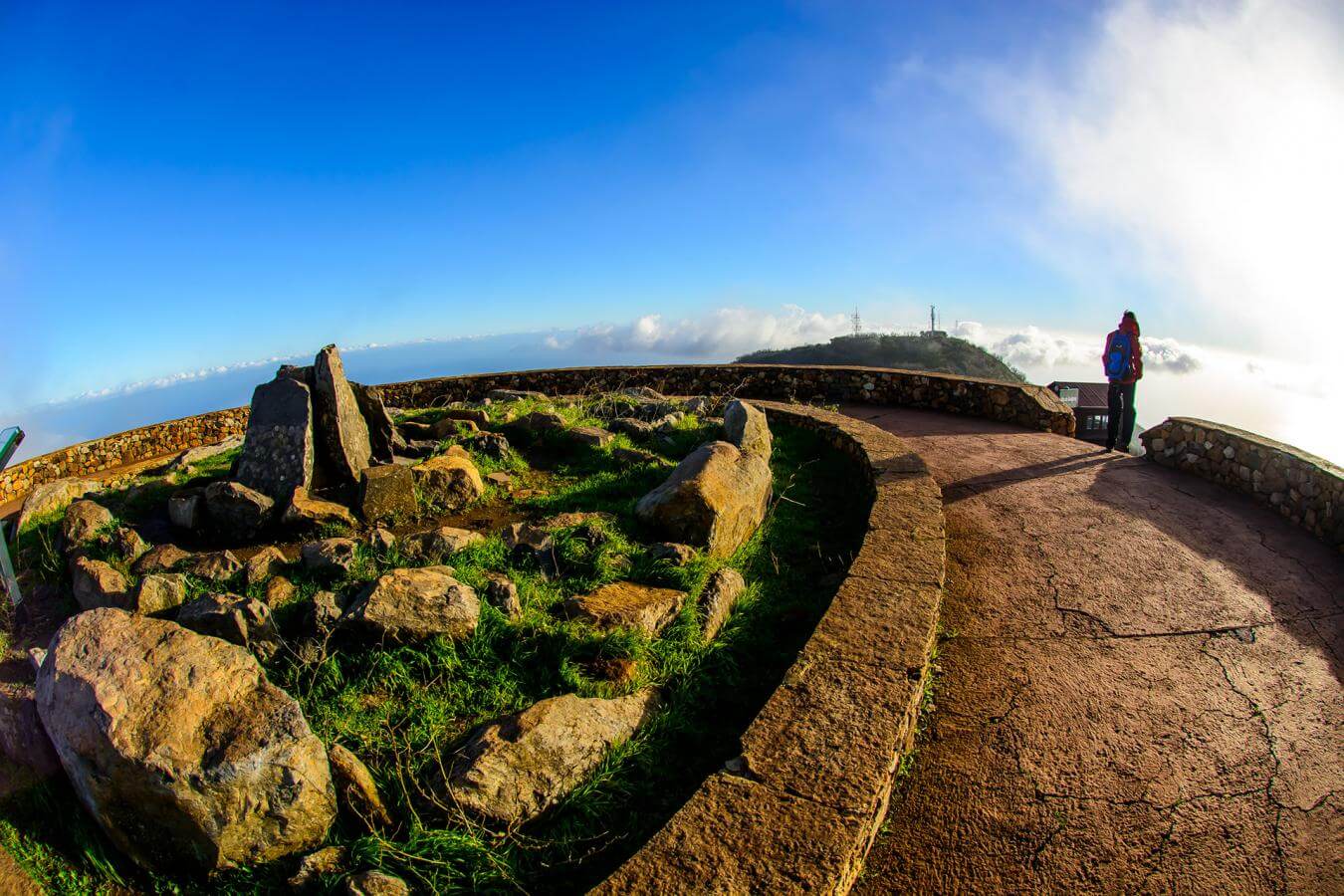
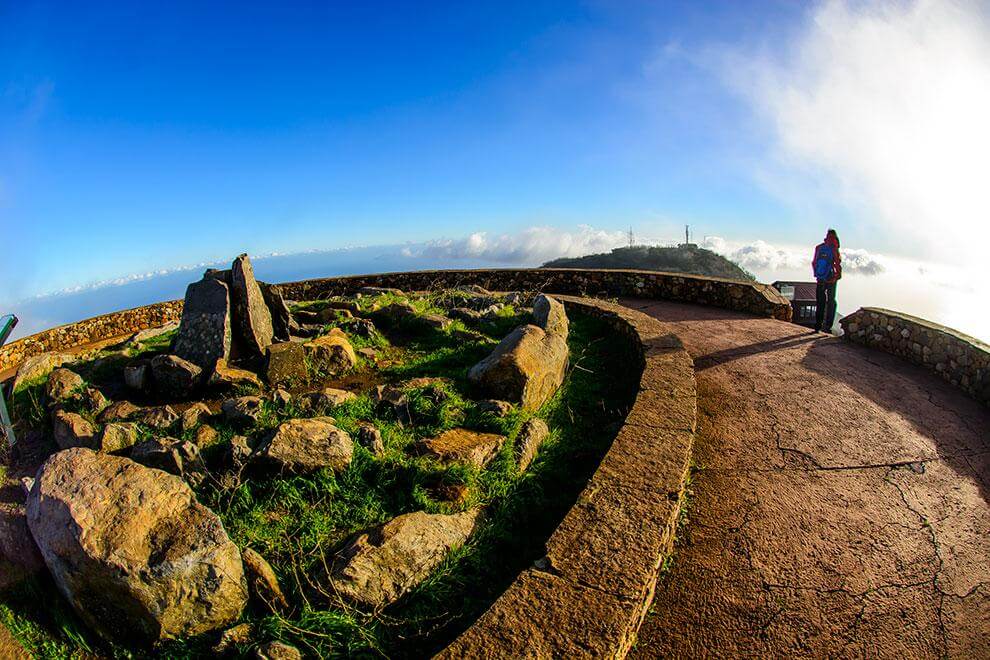
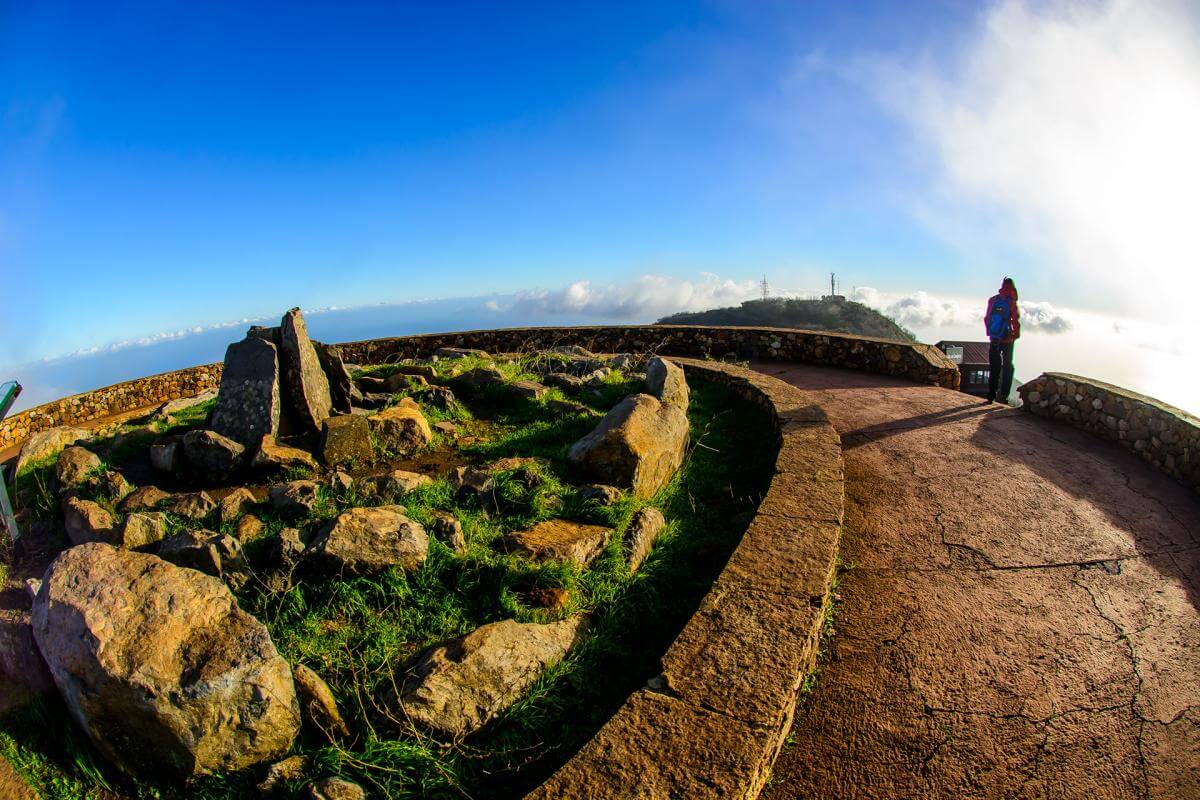
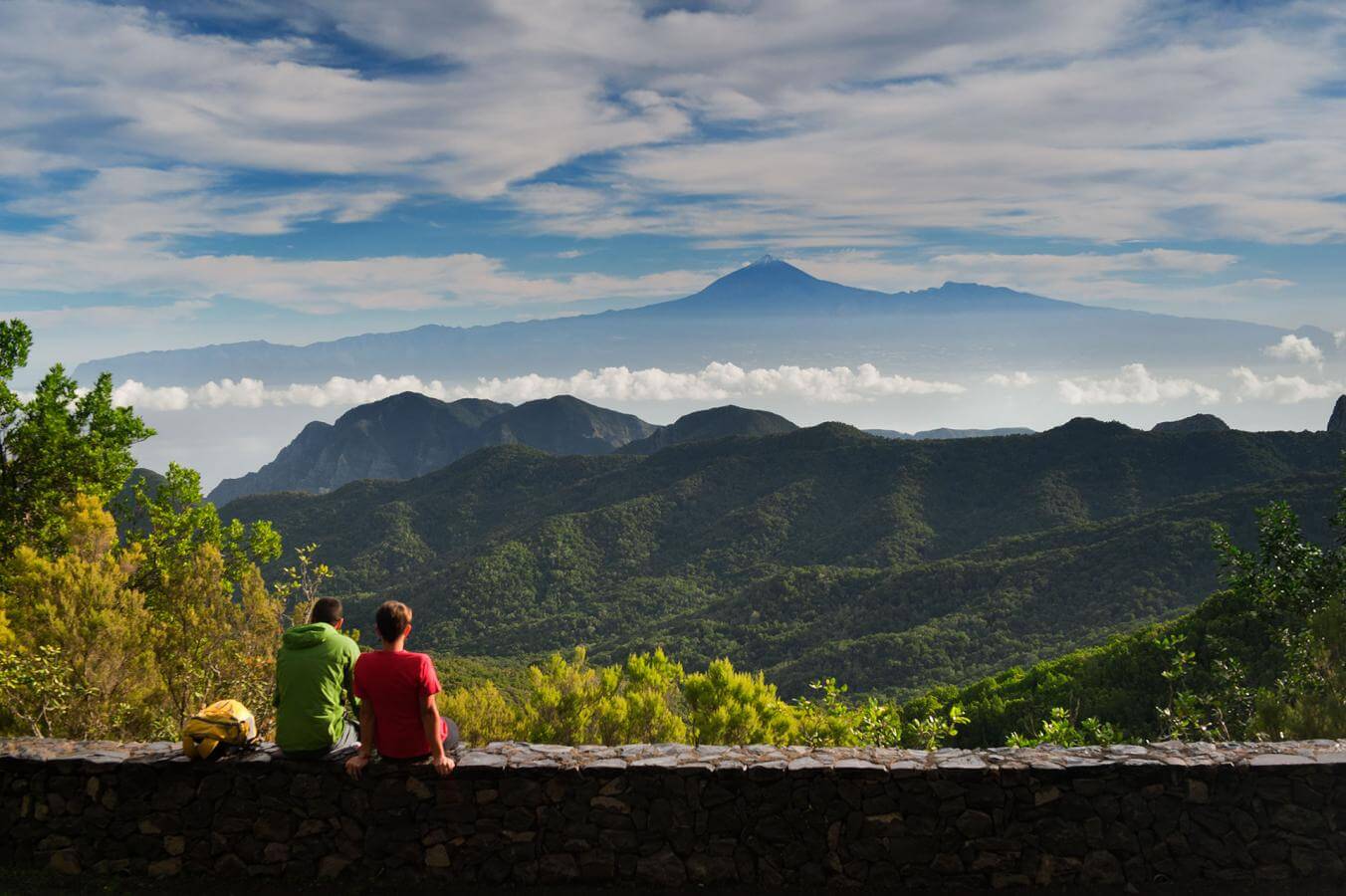
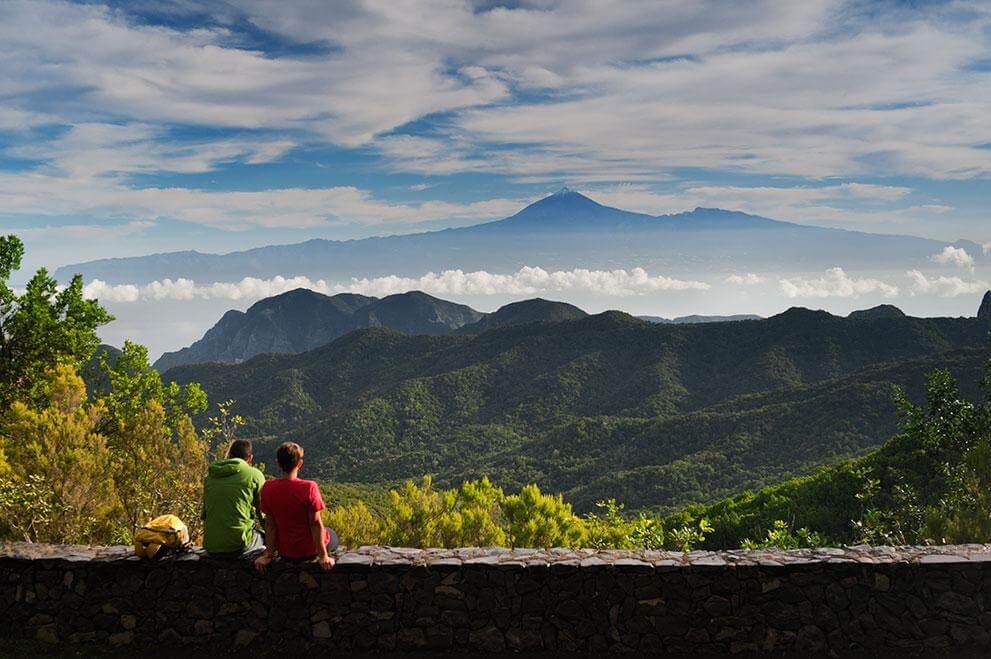
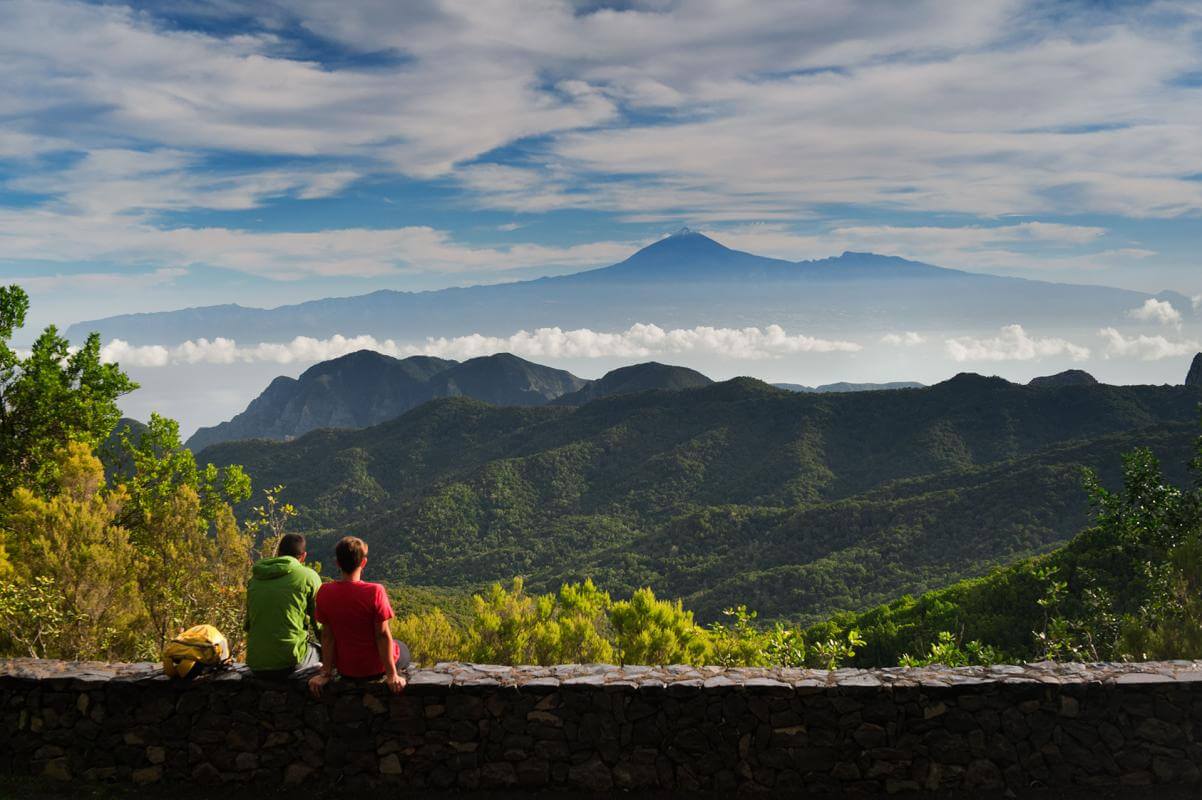
Abrante Viewpoint
Located at an altitude of 625 metres, above the municipality of Agulo, this viewpoint with its glazed structure designed like a balcony affords us exceptionally beautiful views of the neighbouring island on clear days.
Has it rained in the high part of the island? You may be able to see some spectacular waterfalls: those of La Vica, El Chorro and La Zula.
